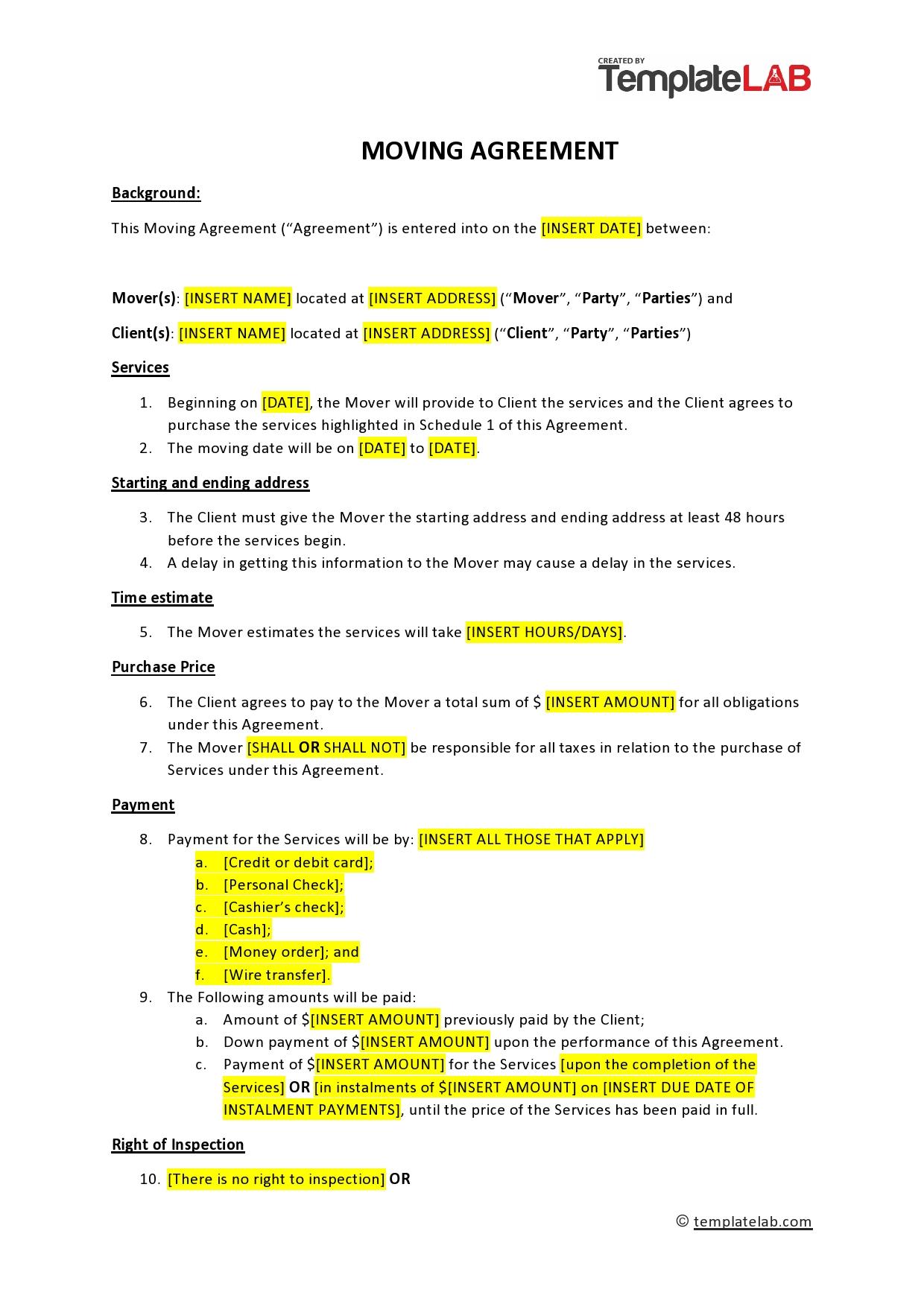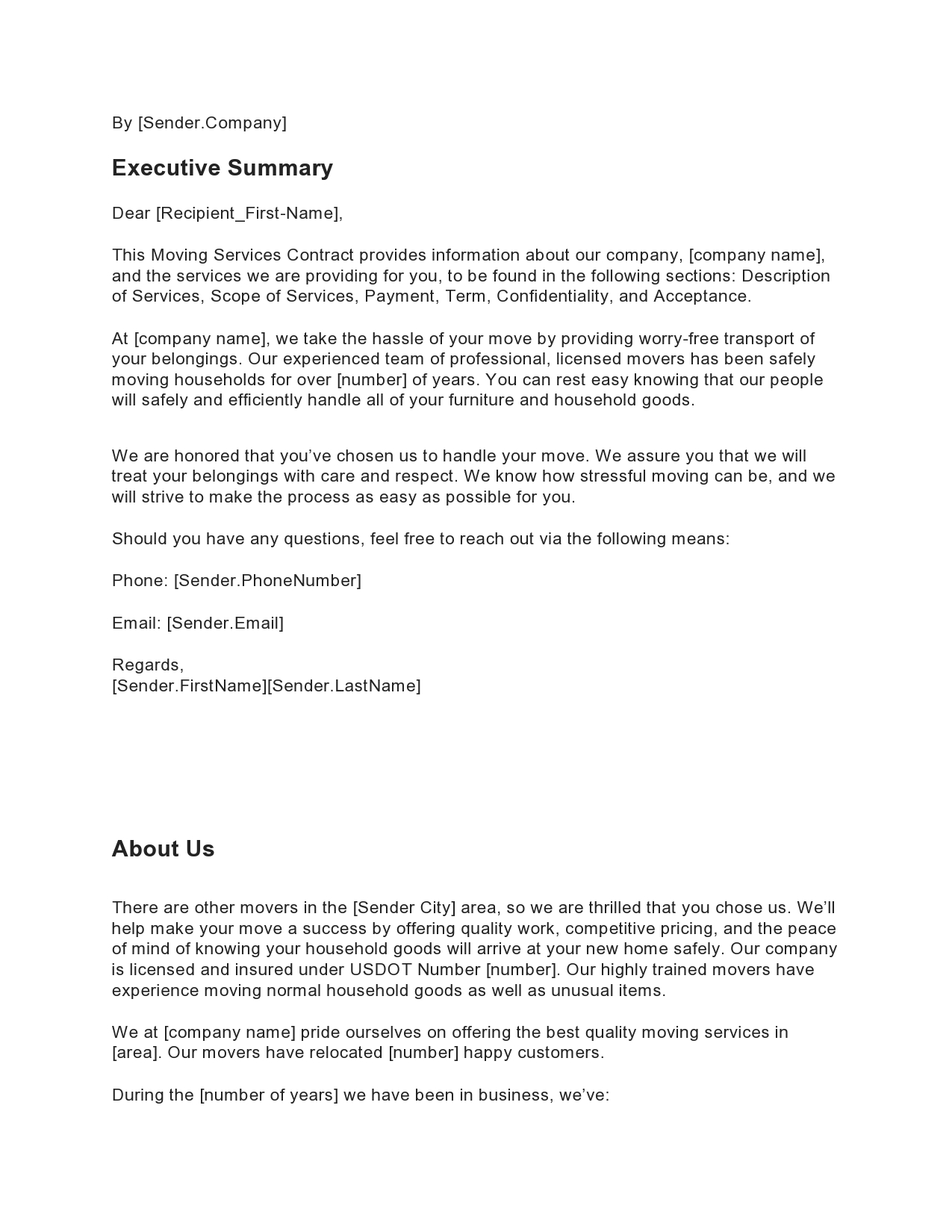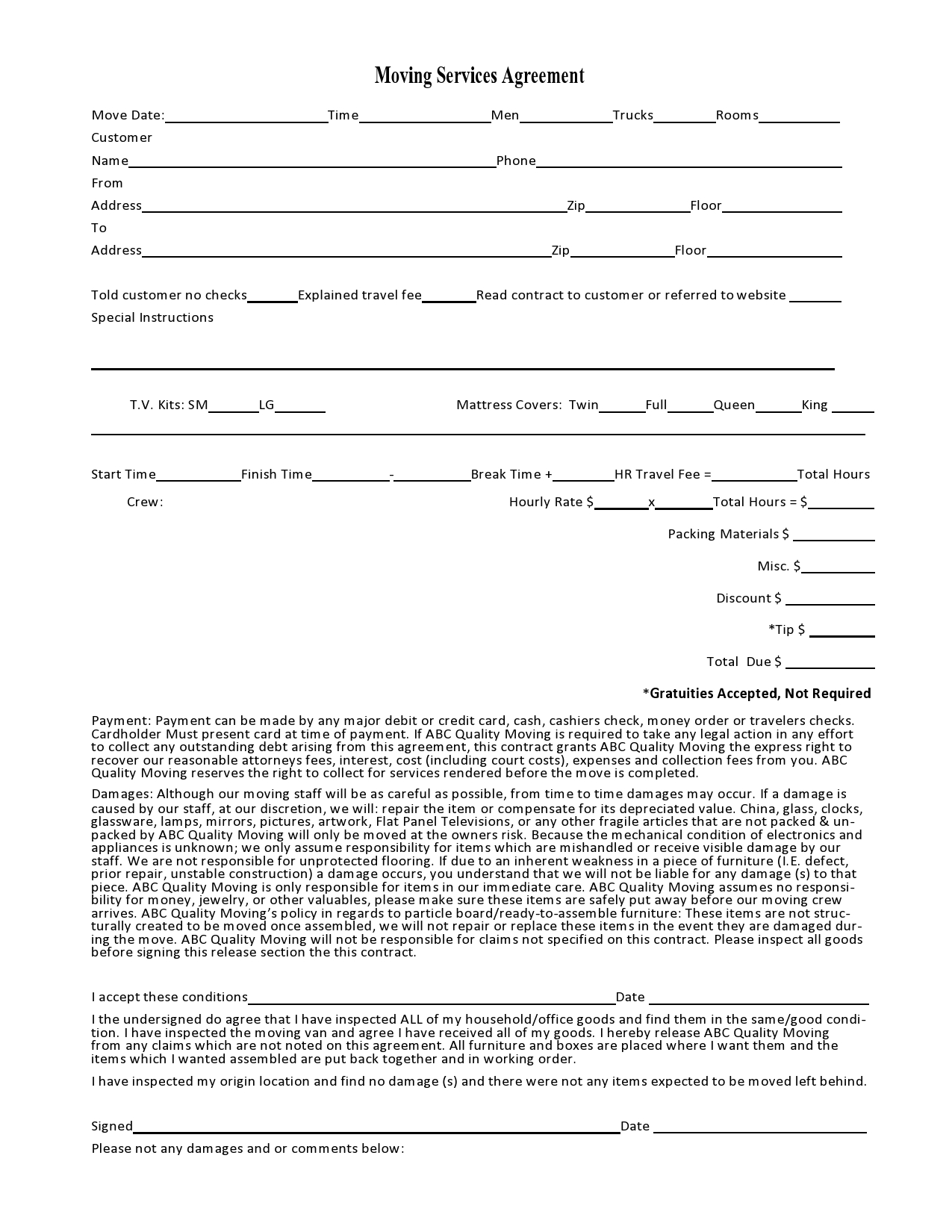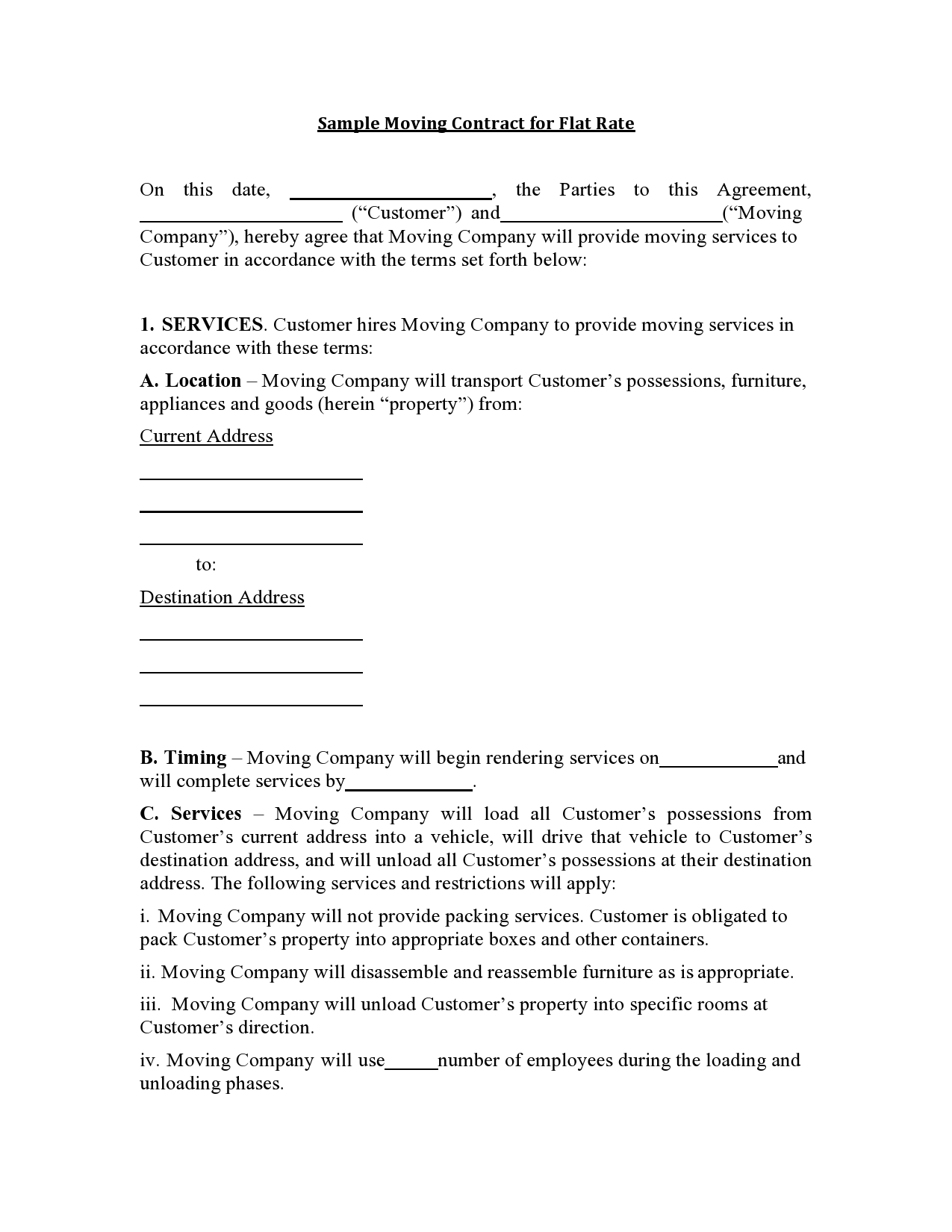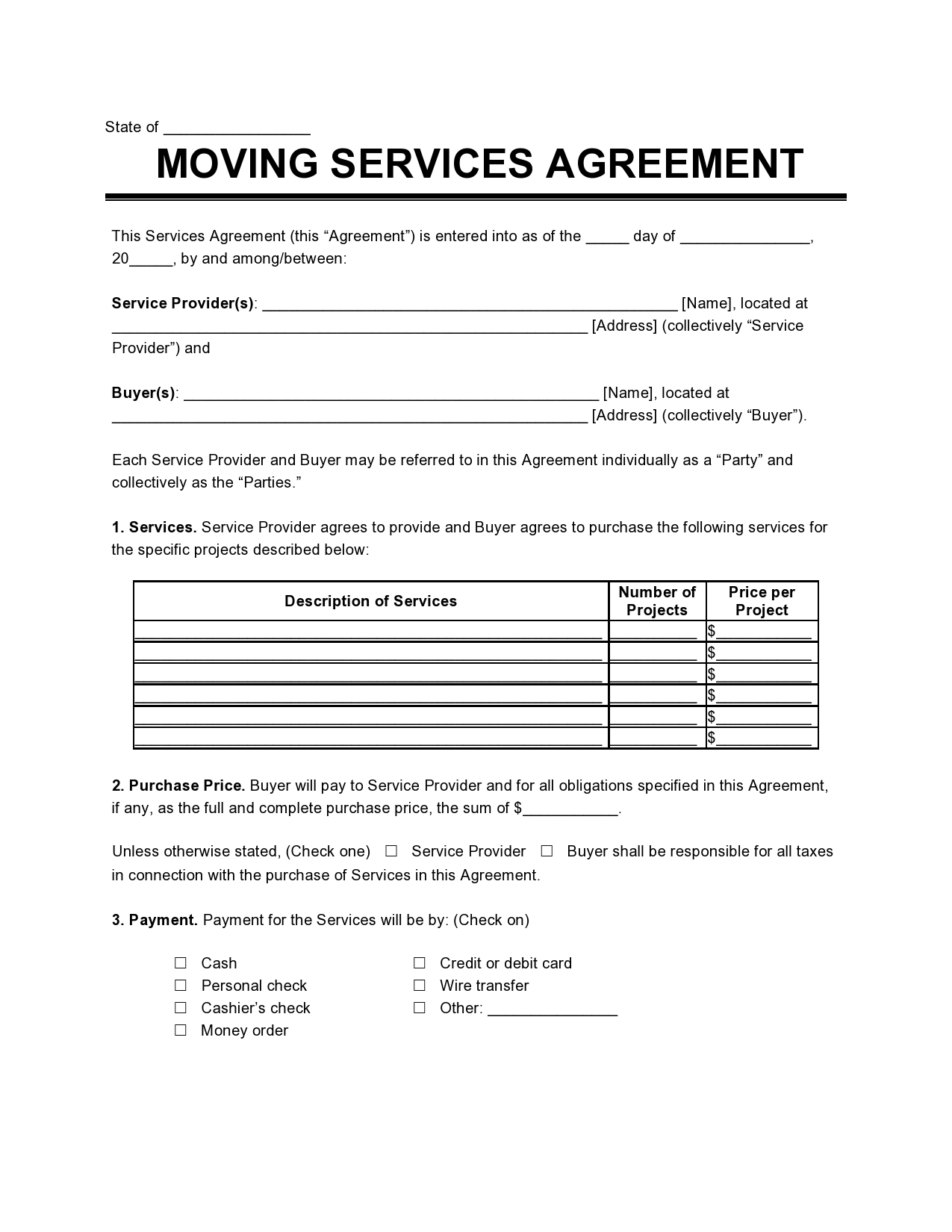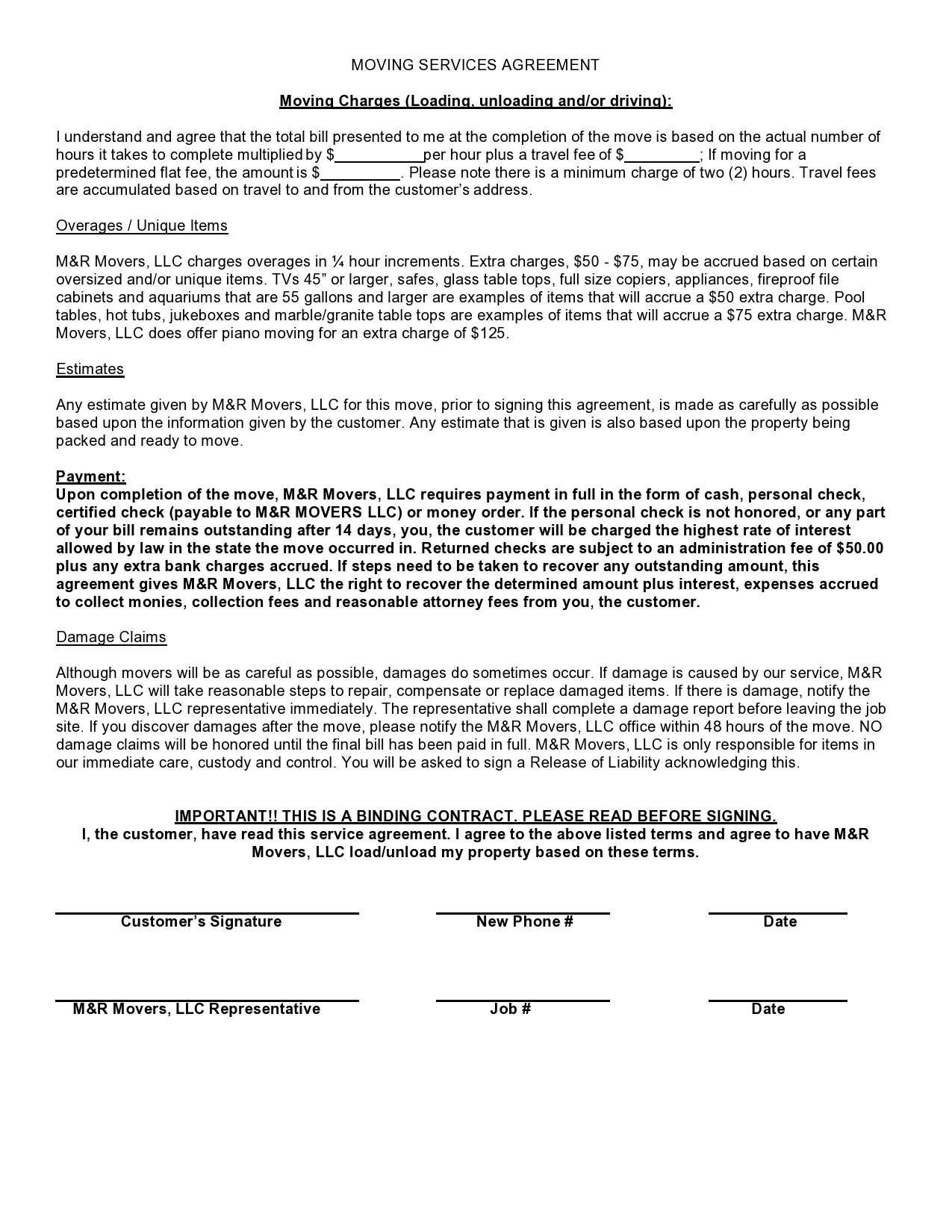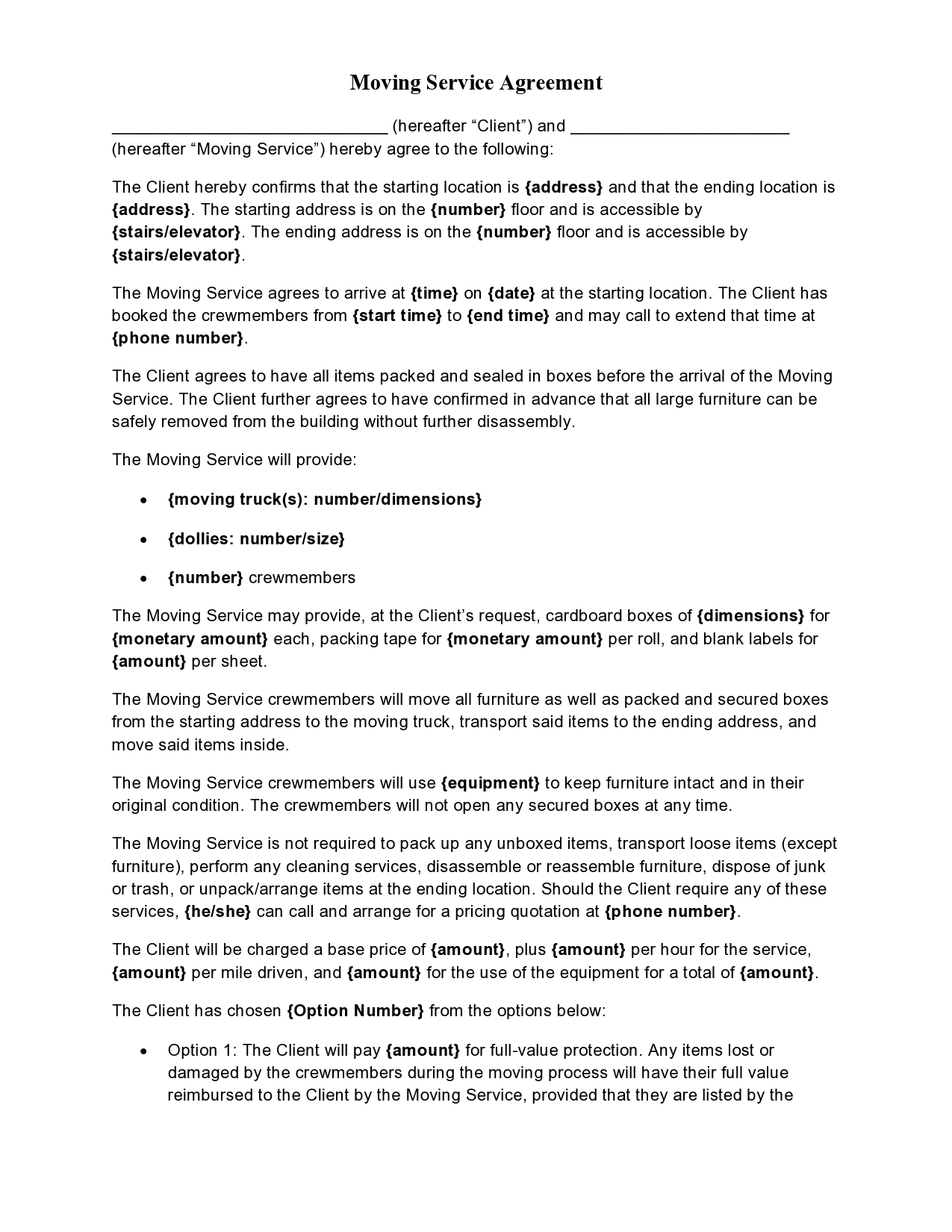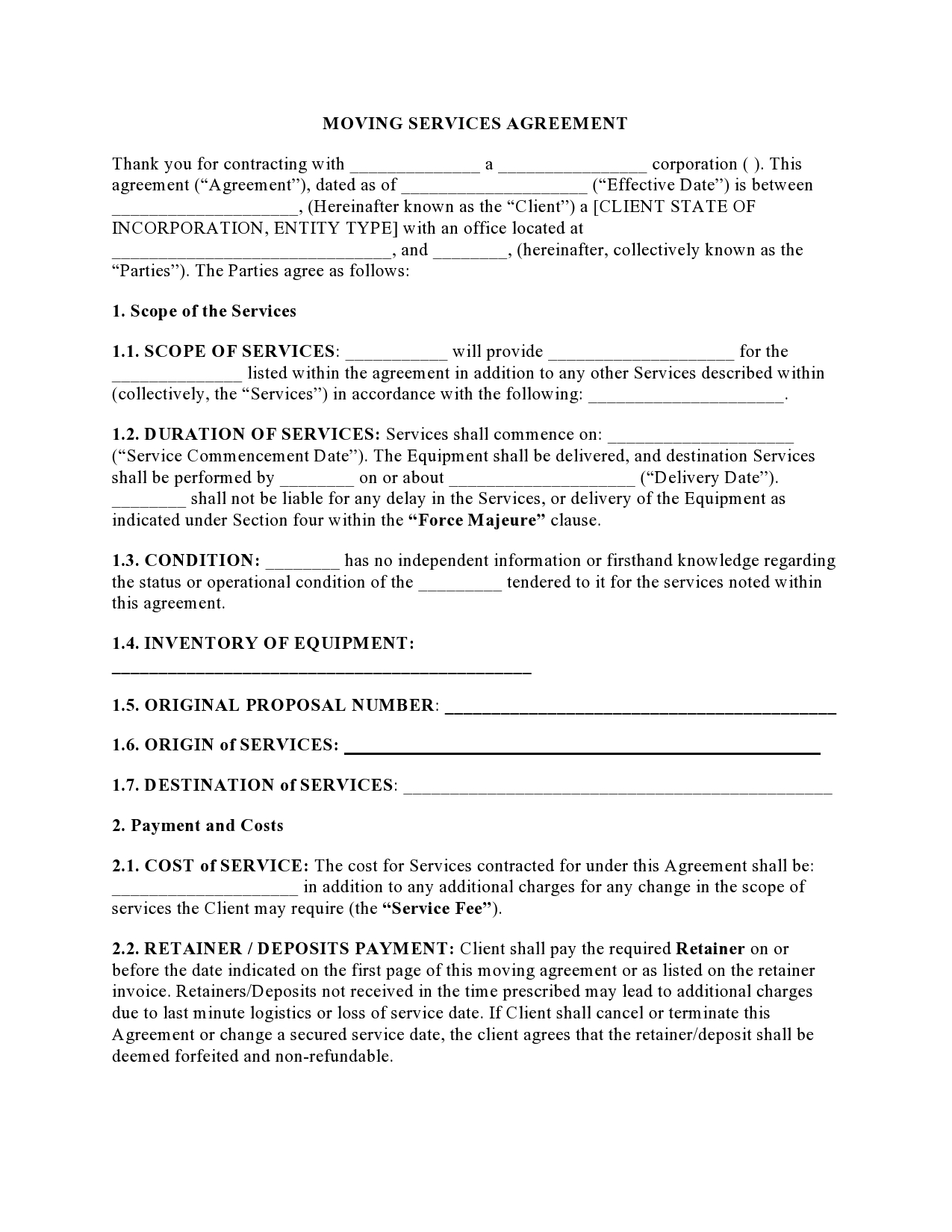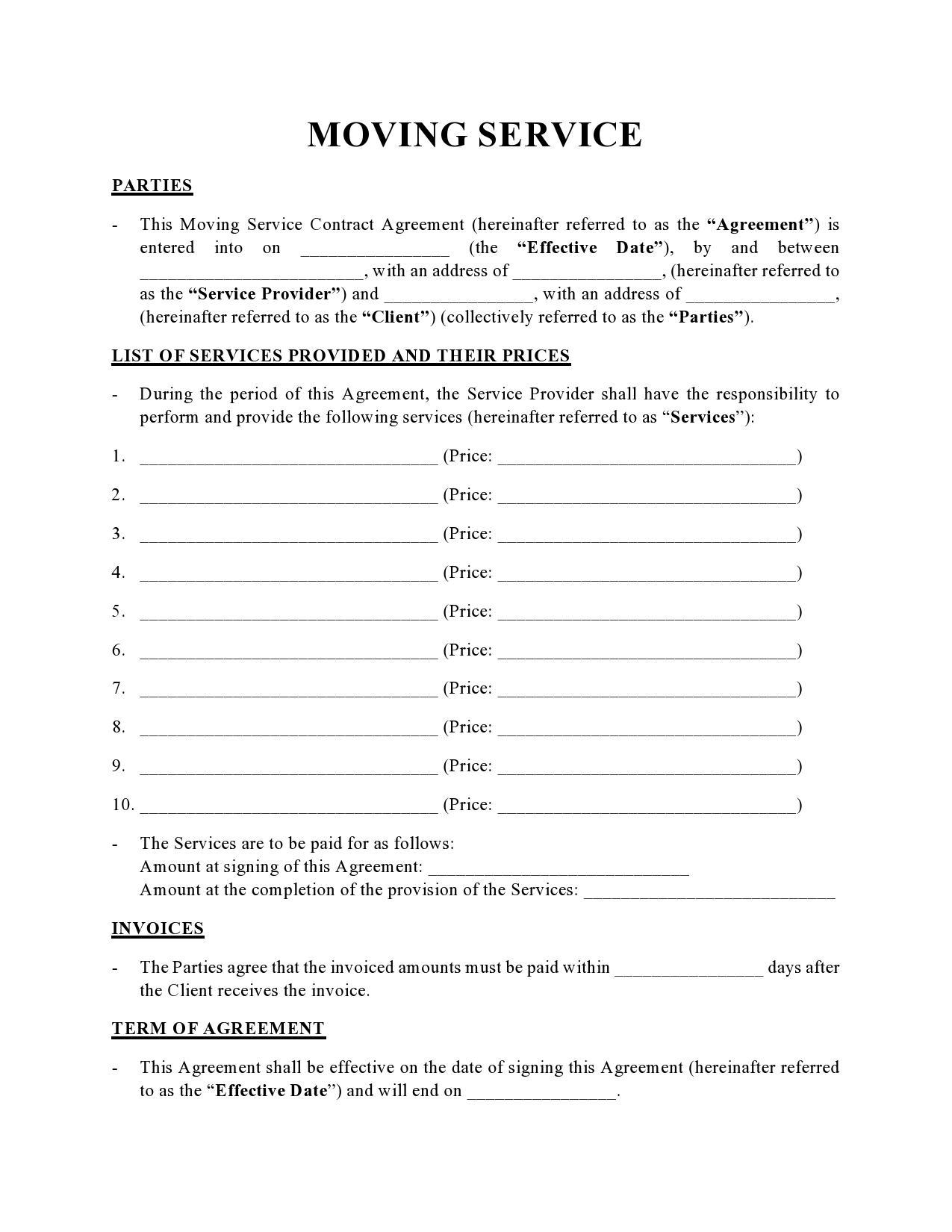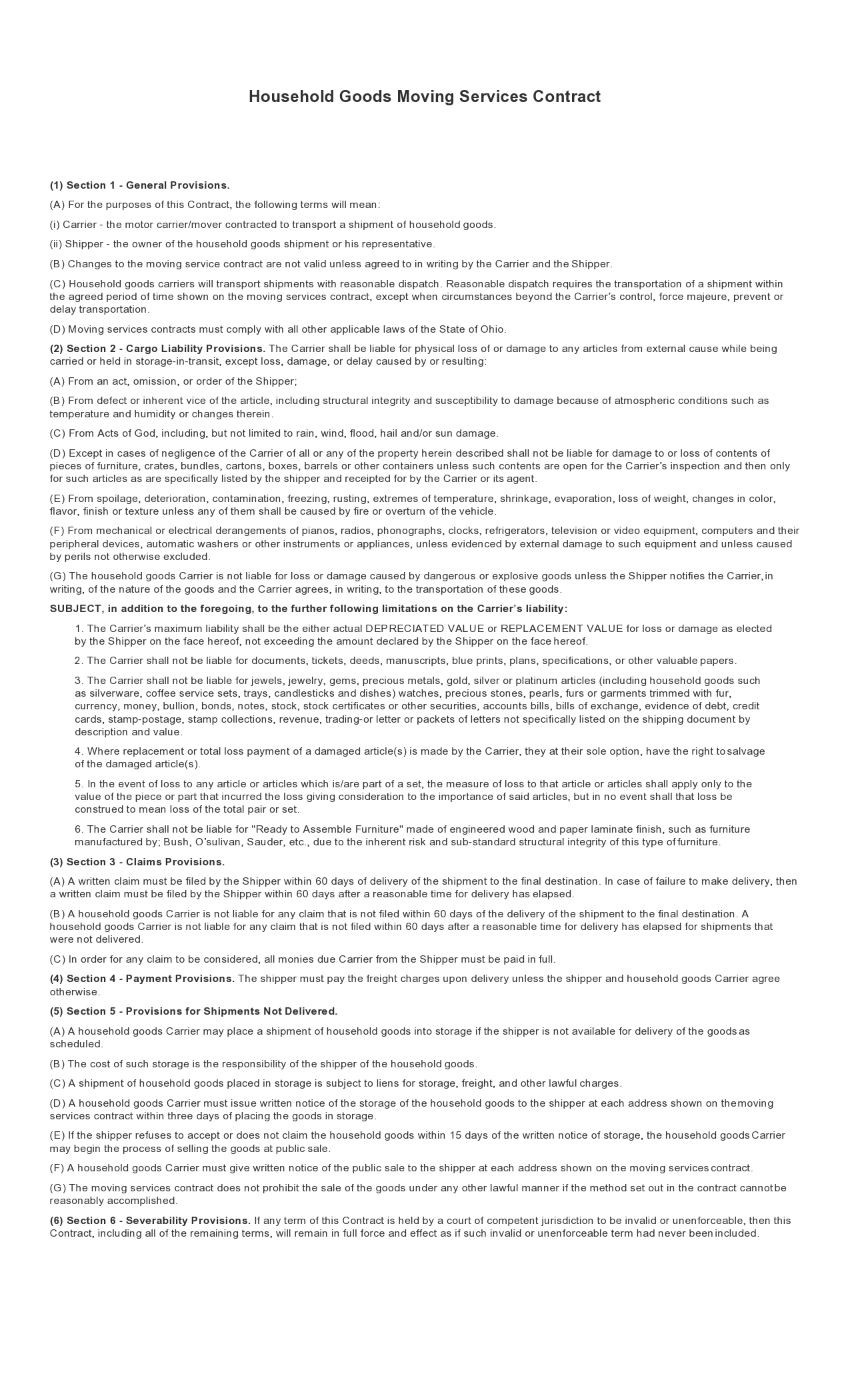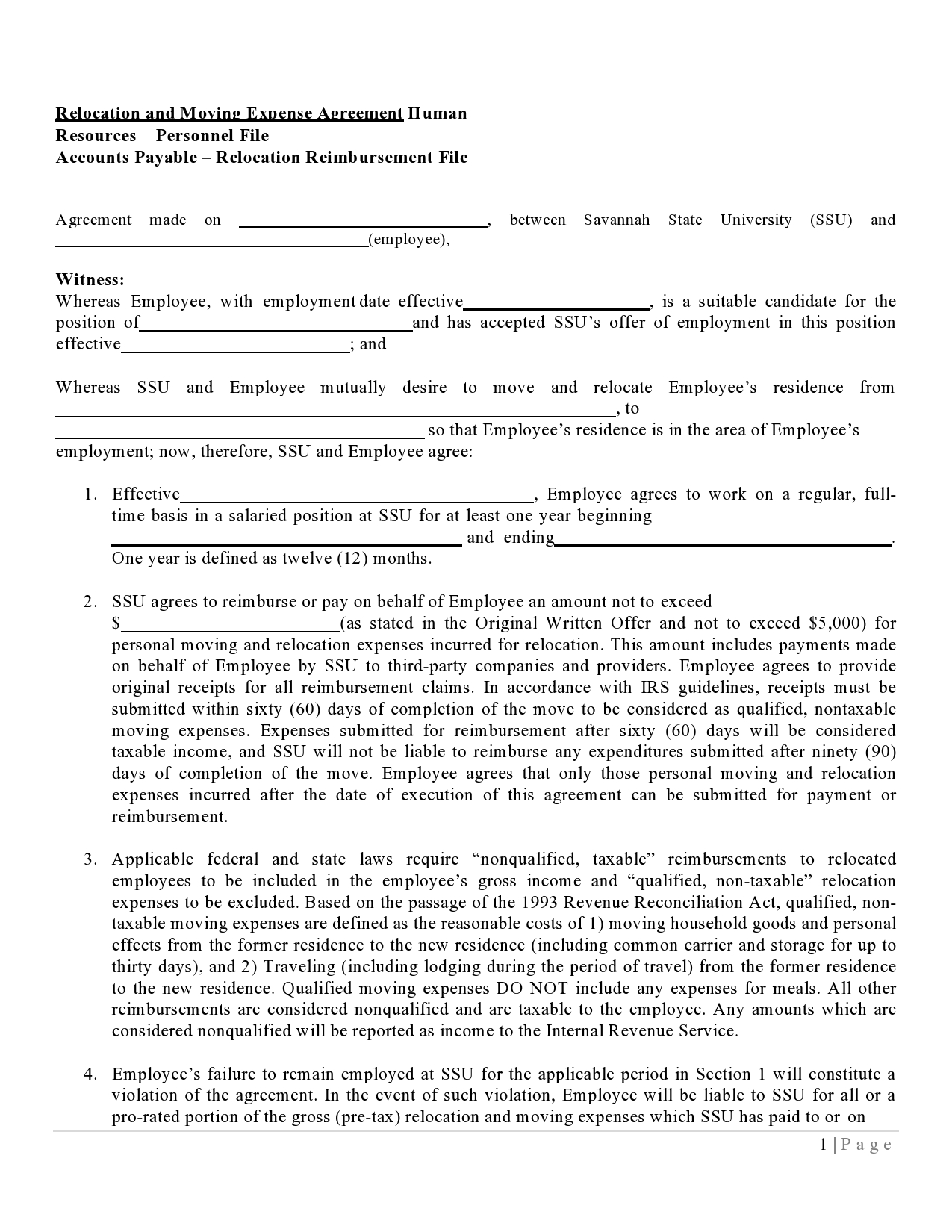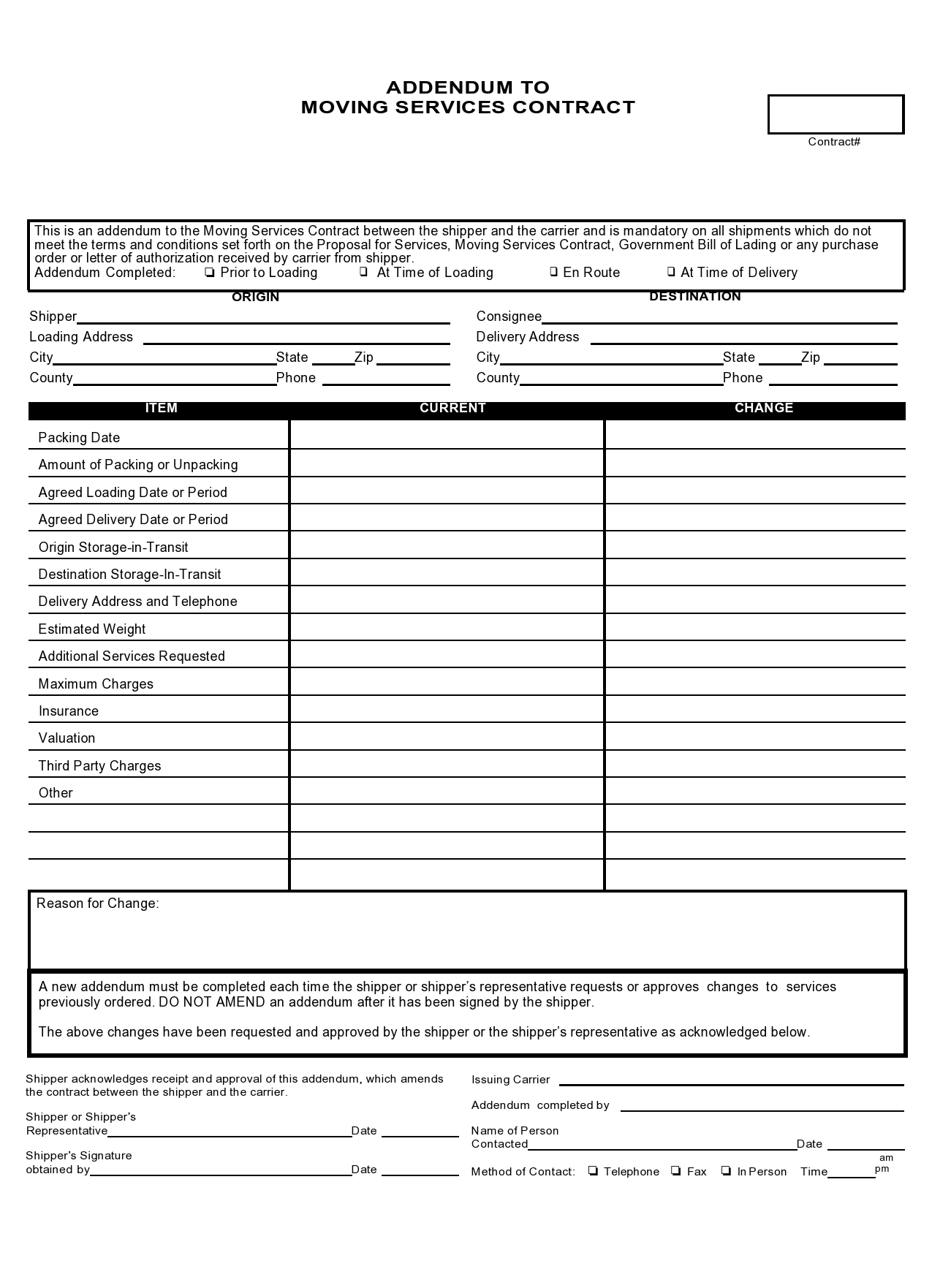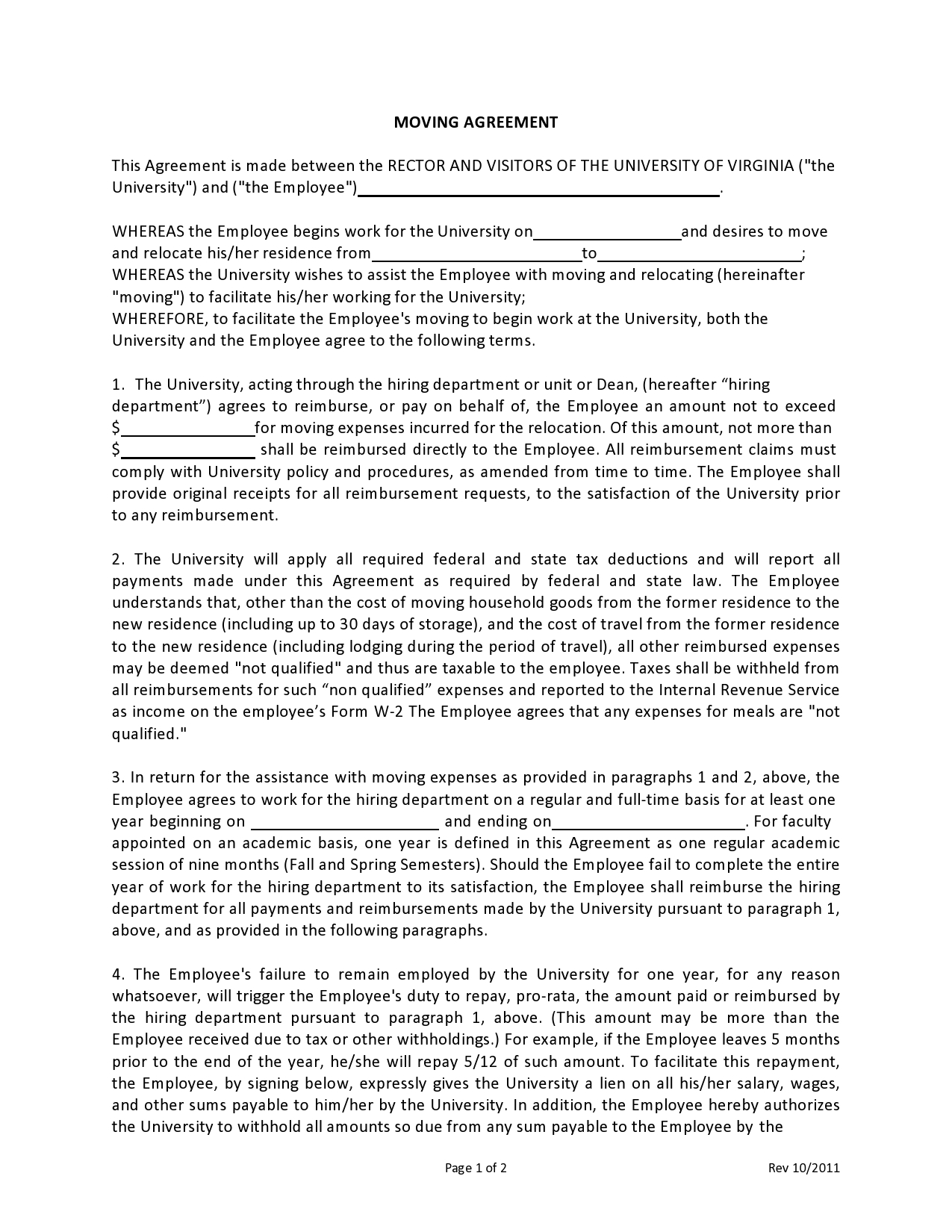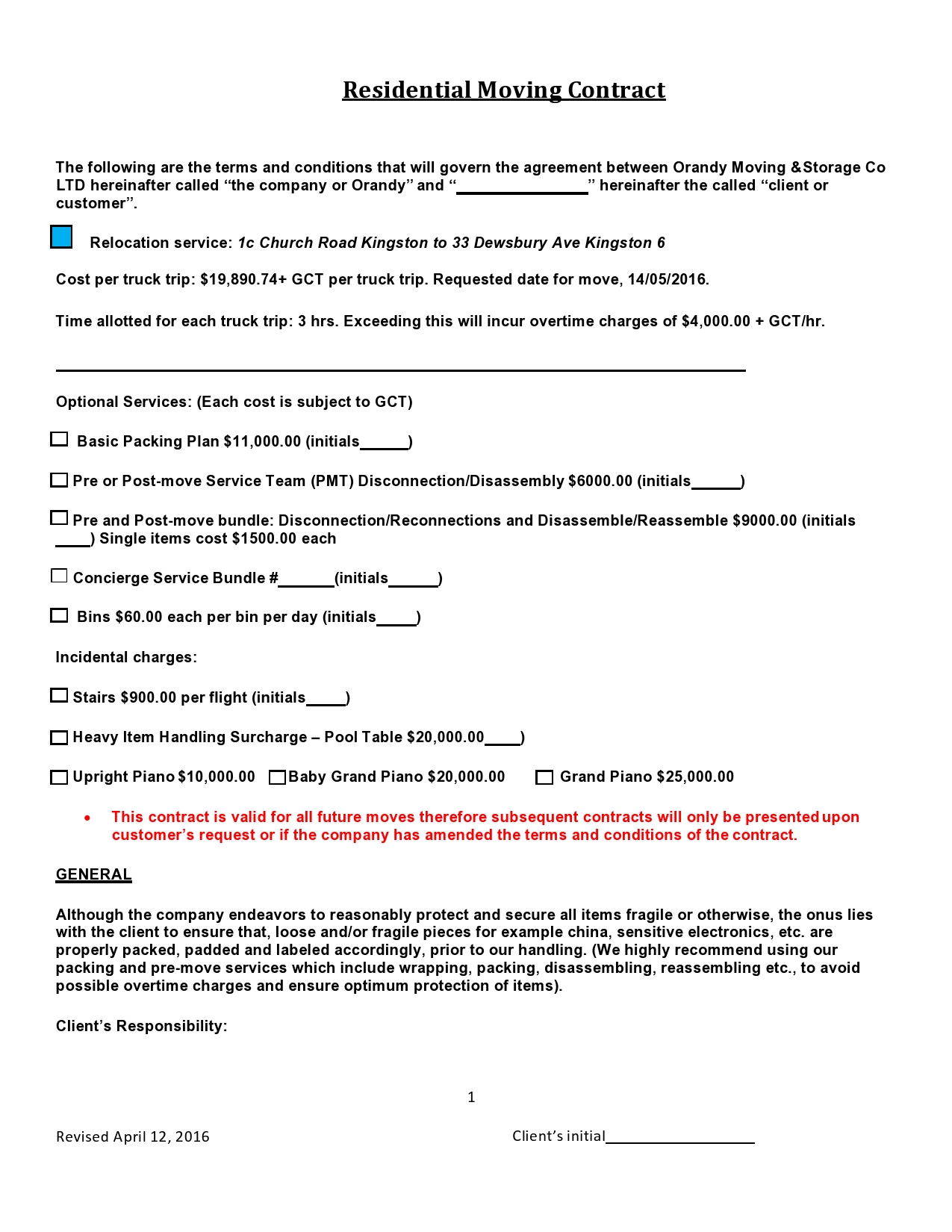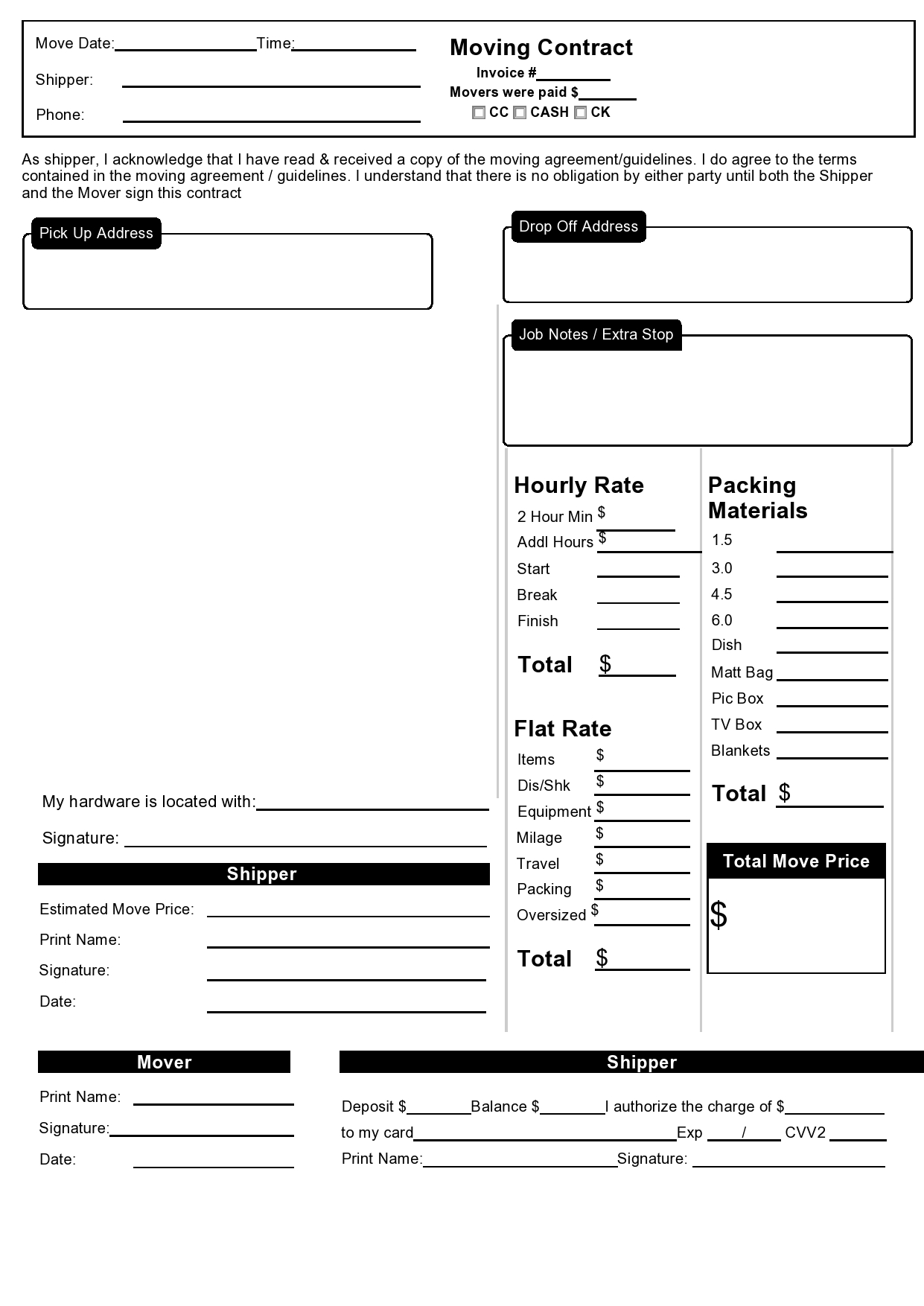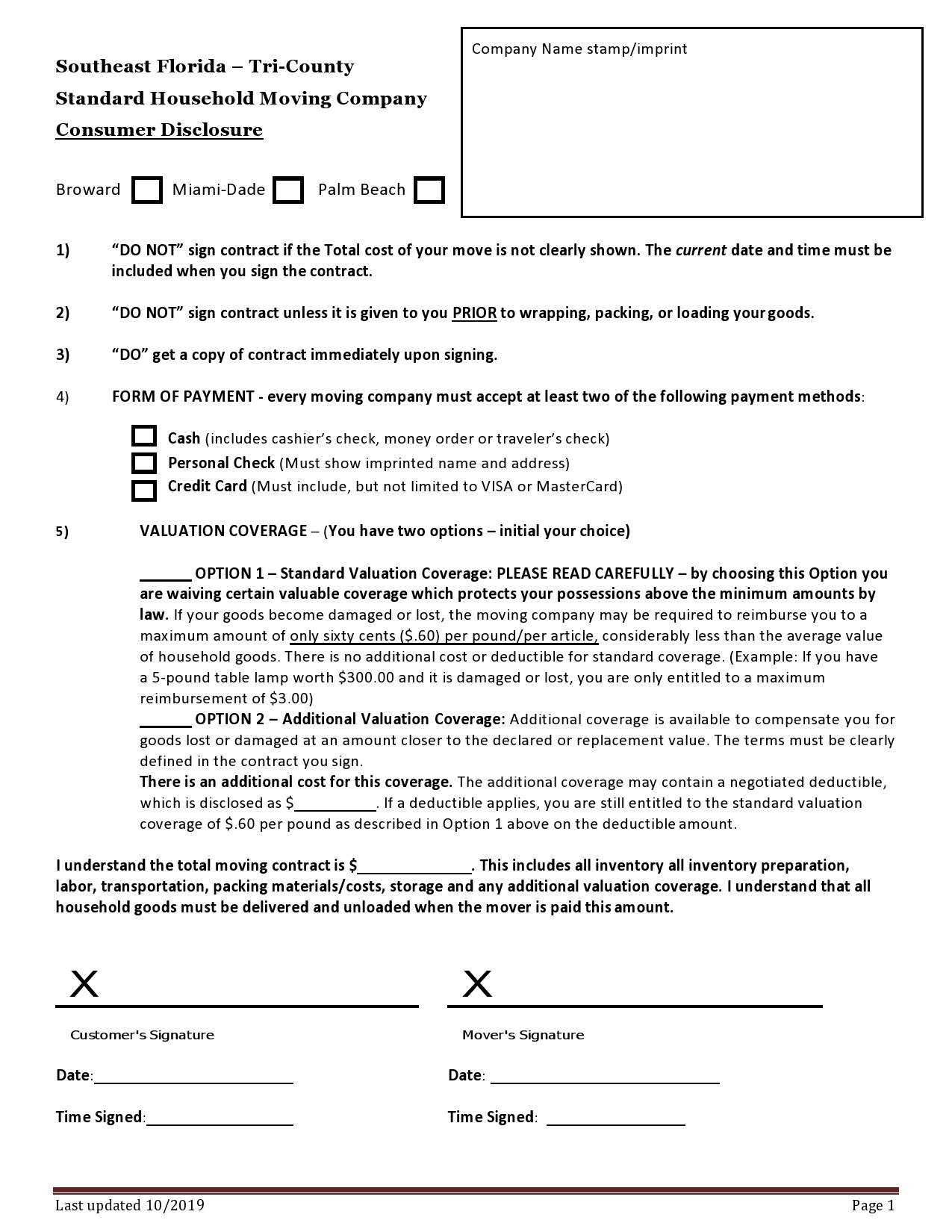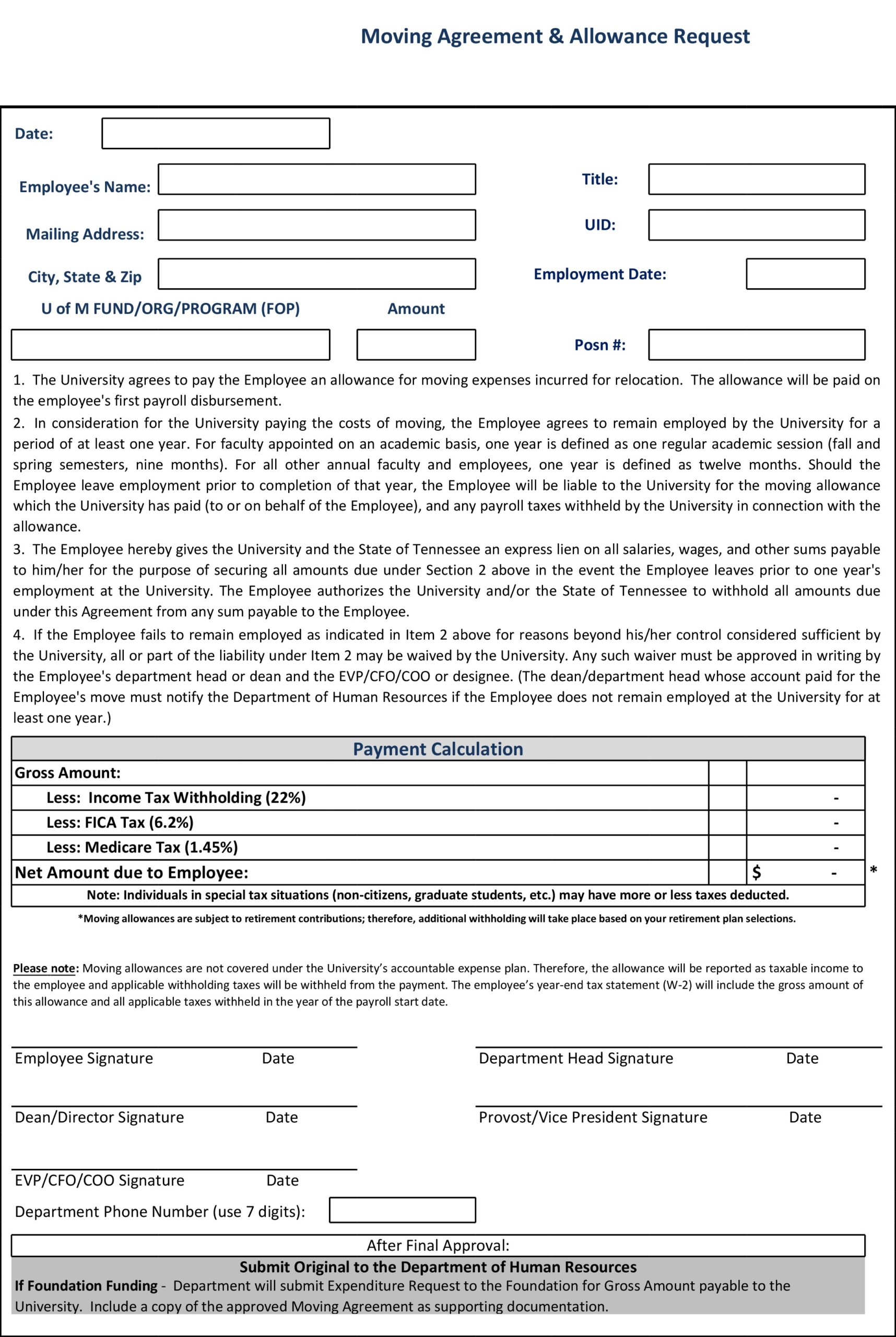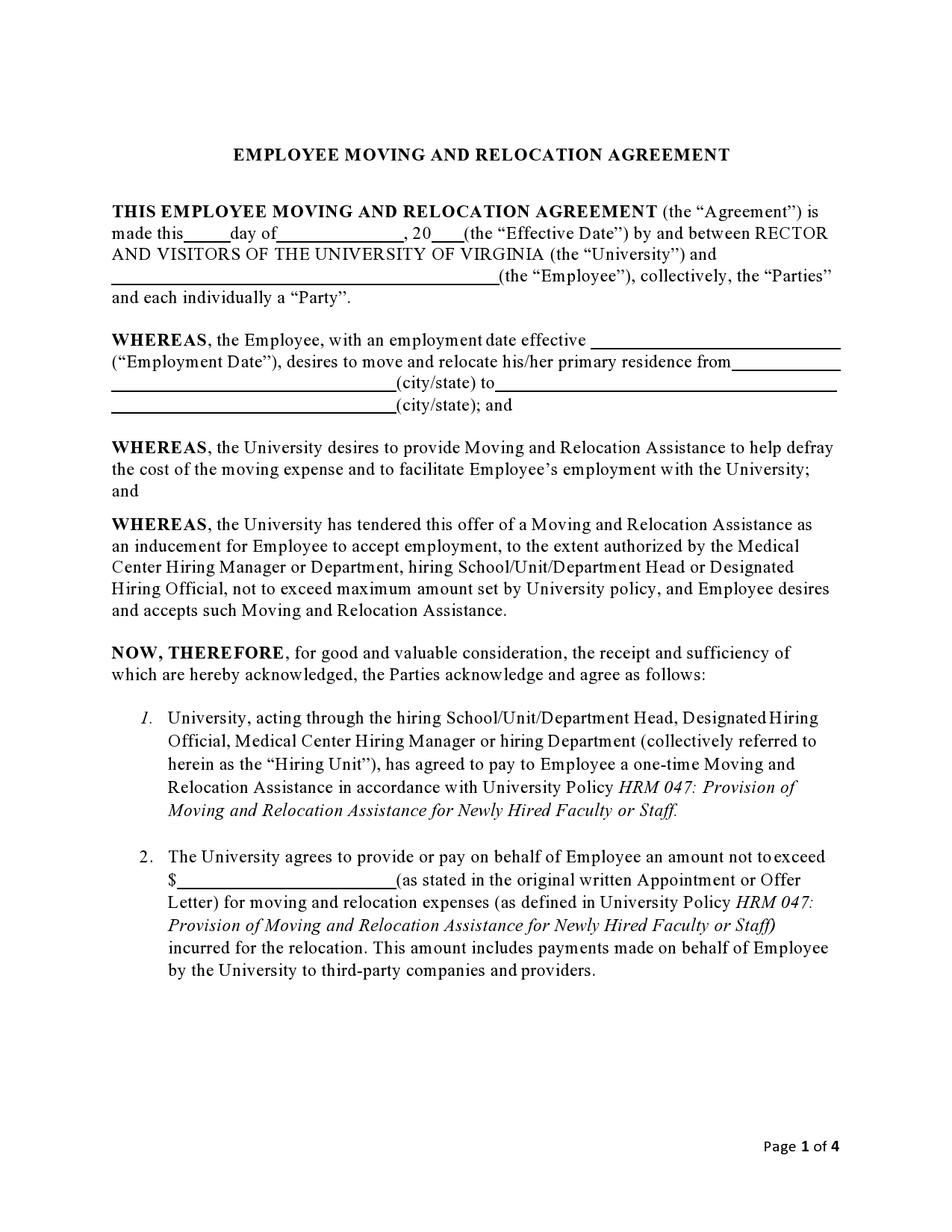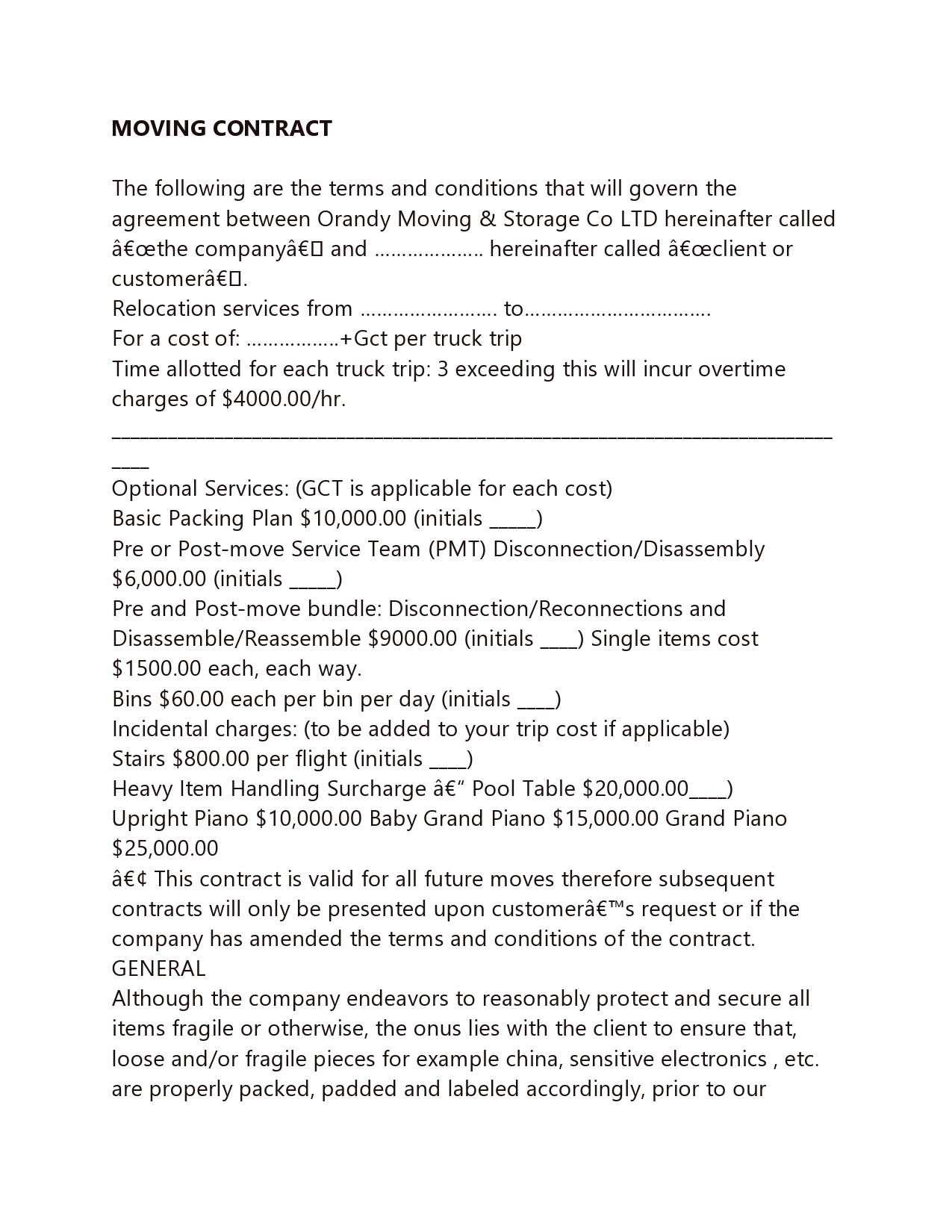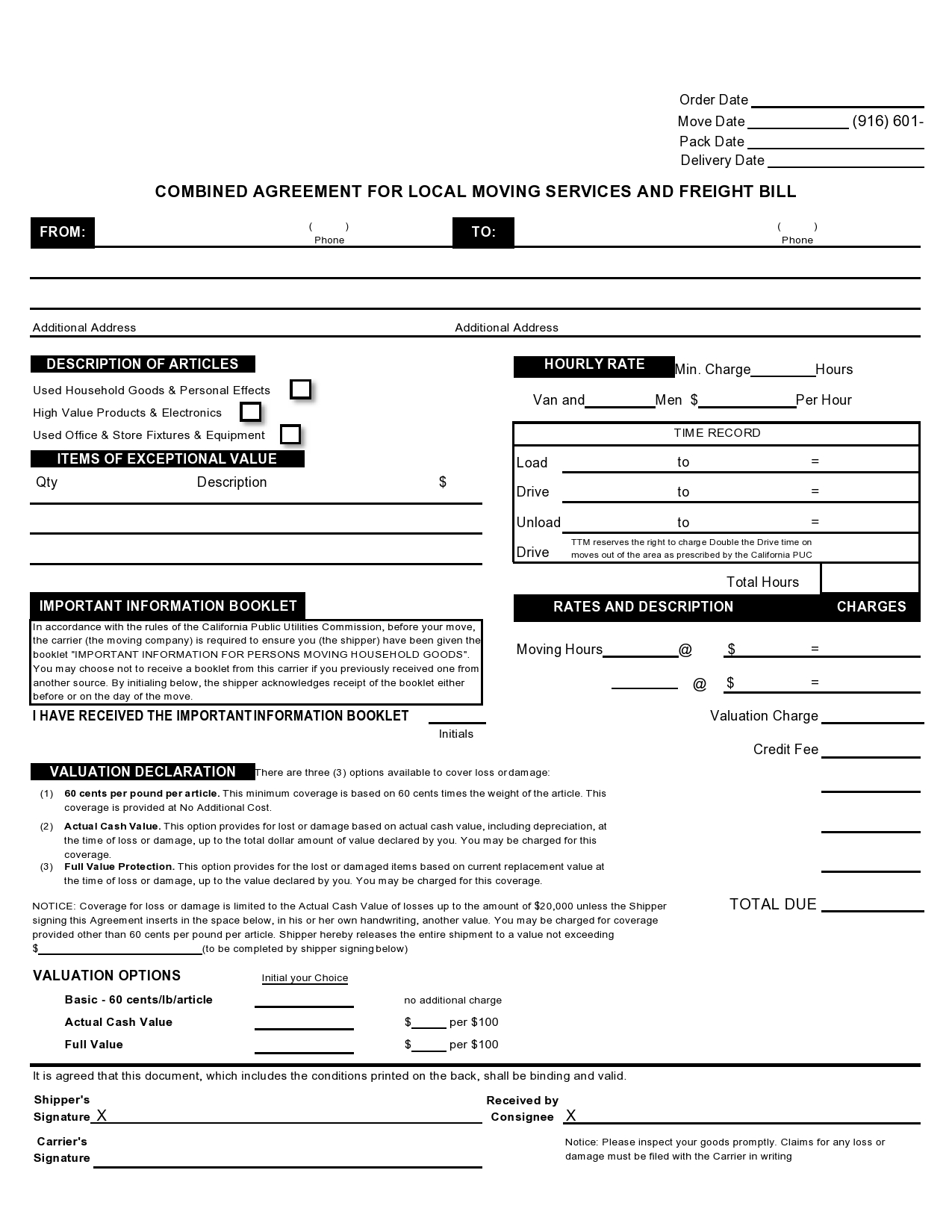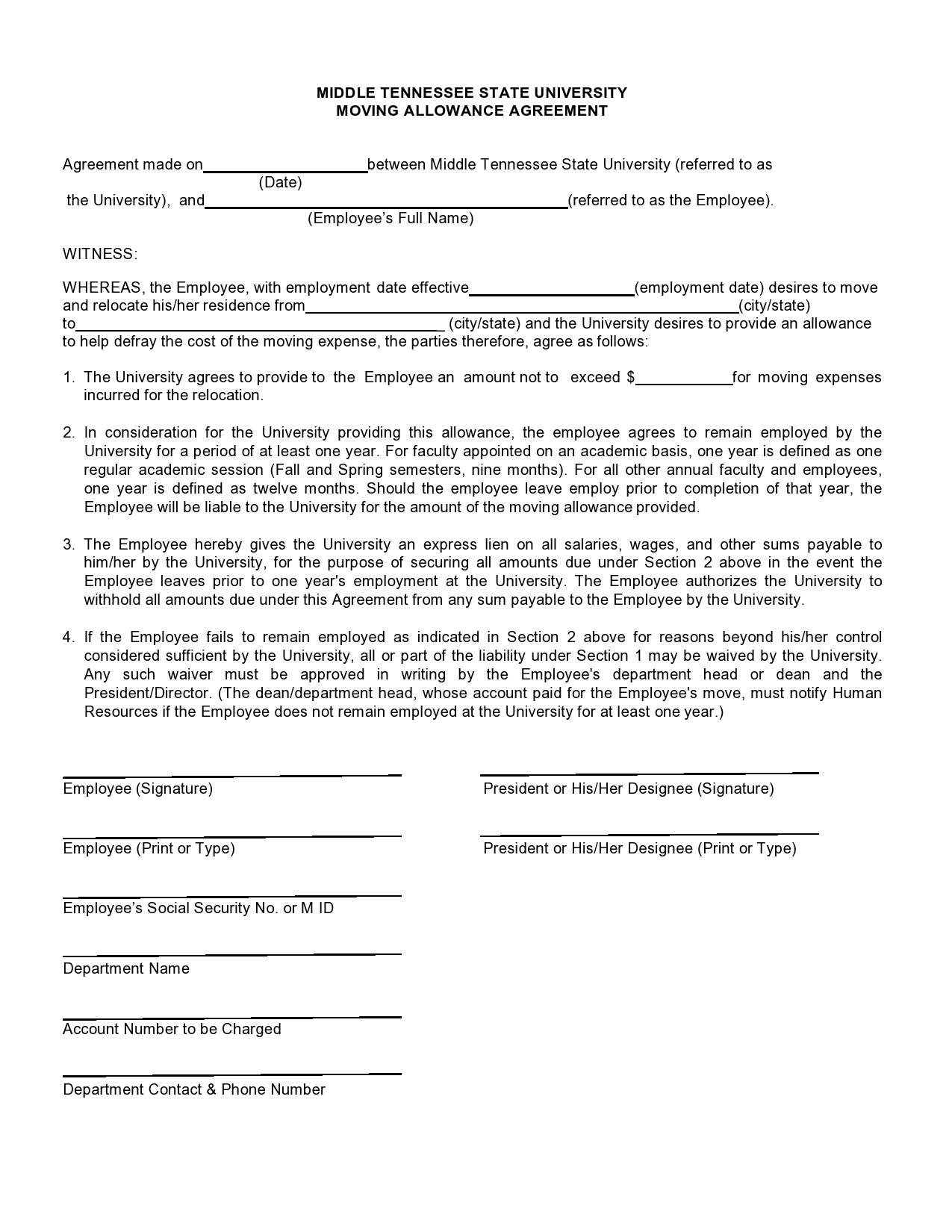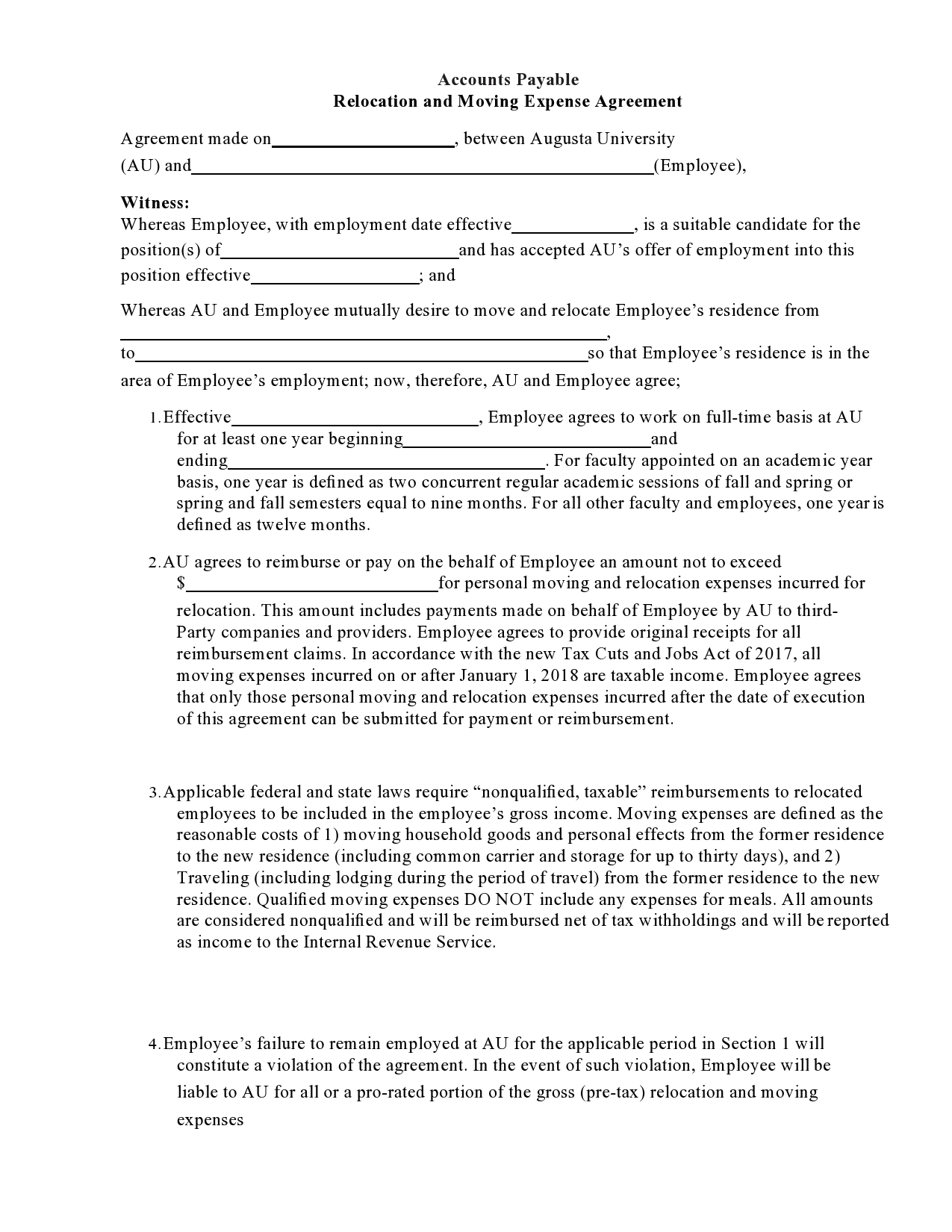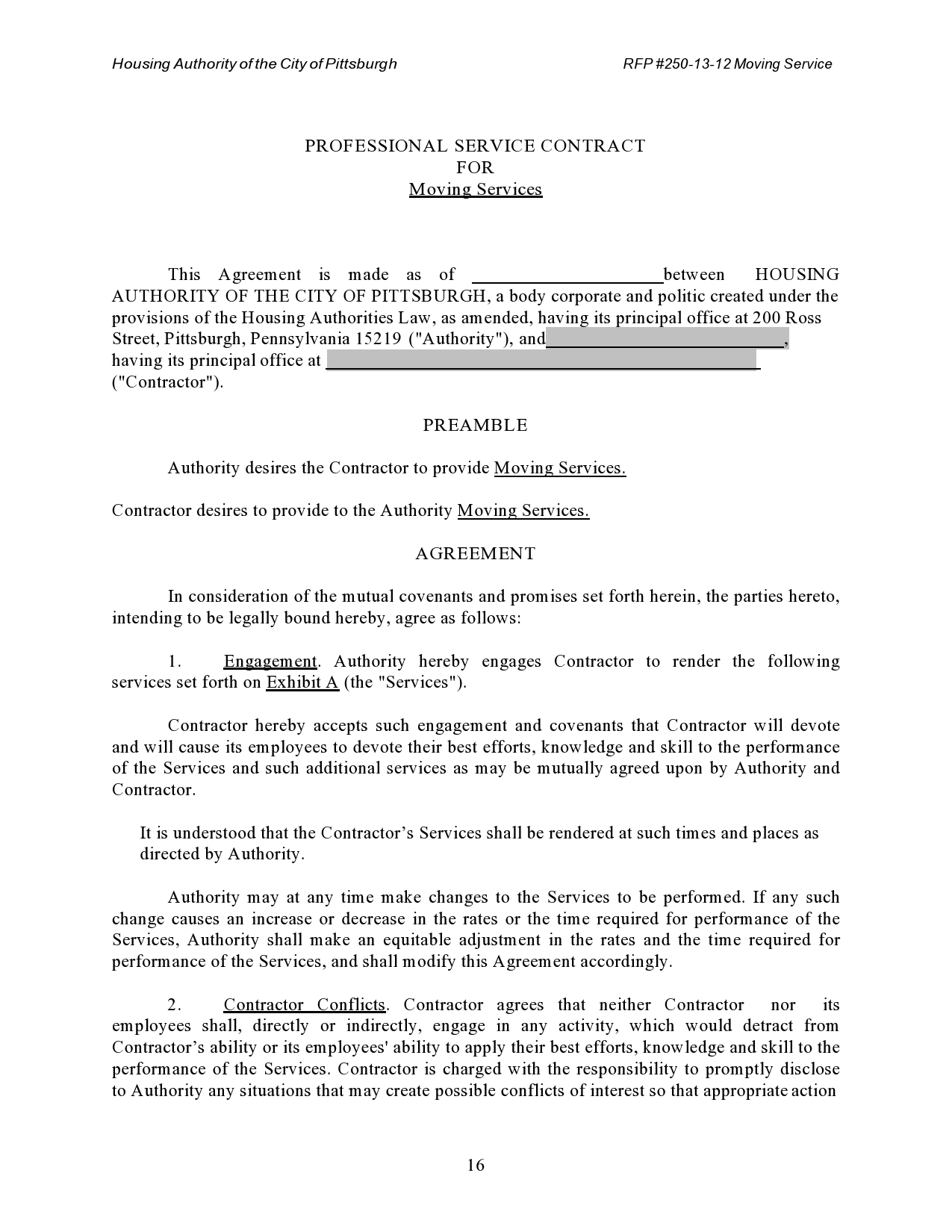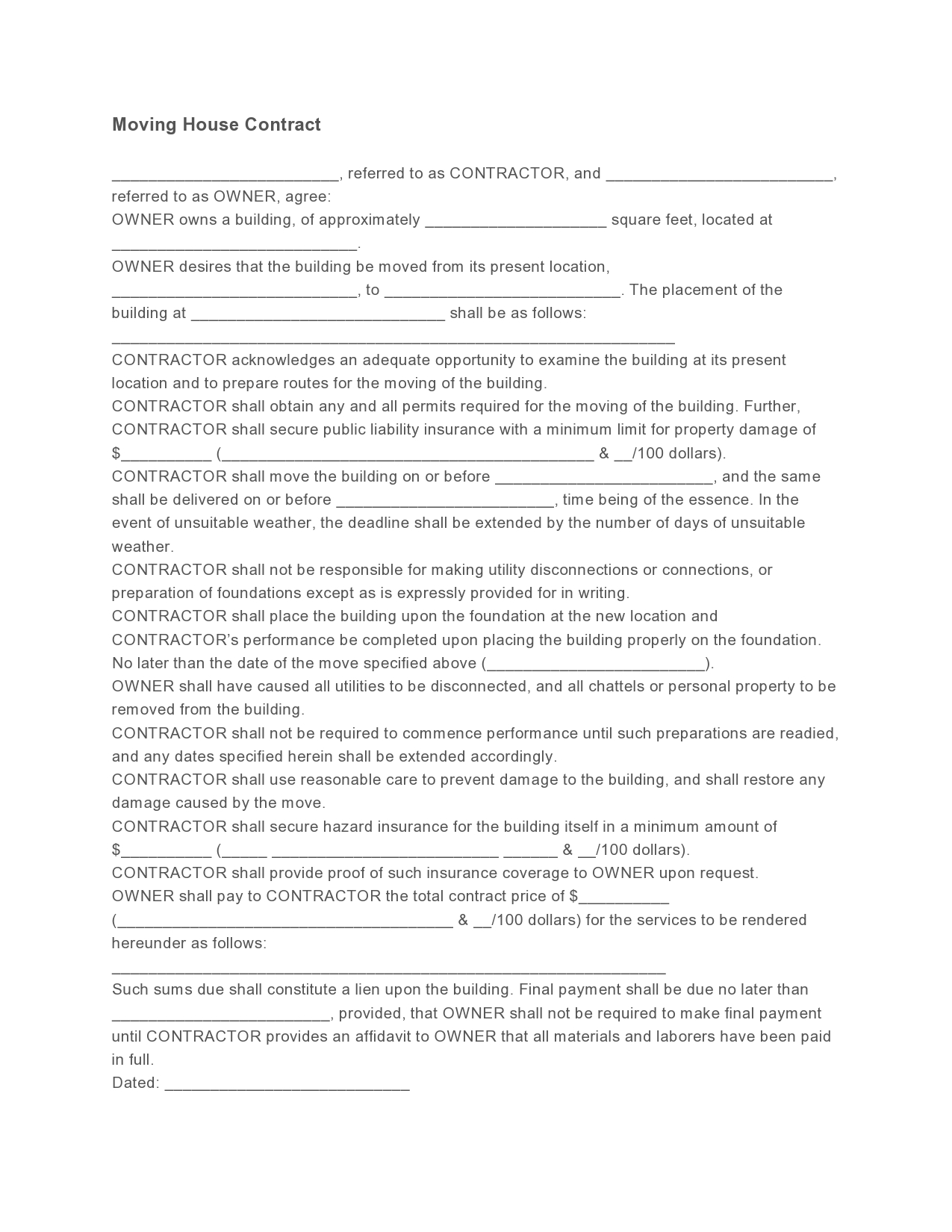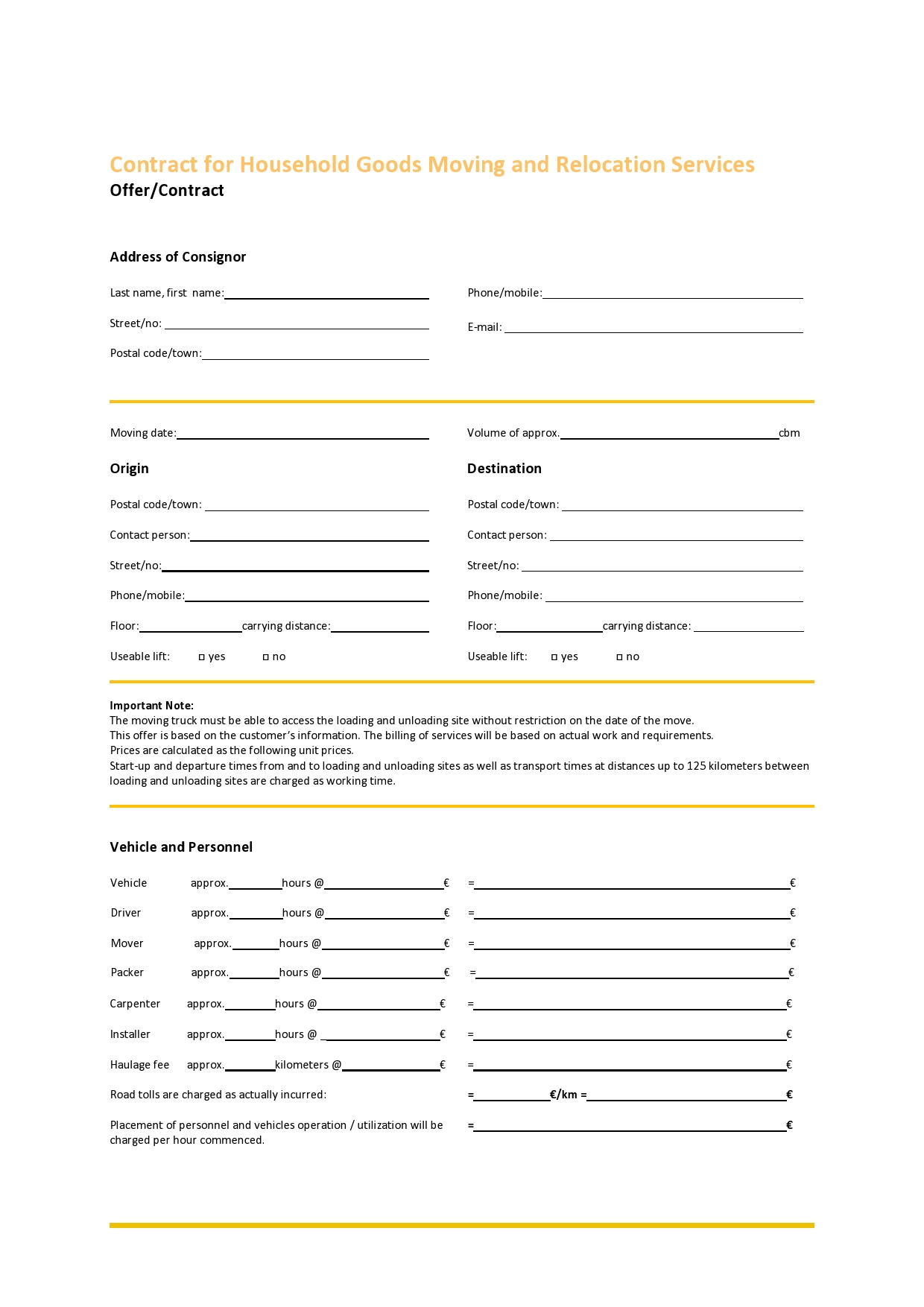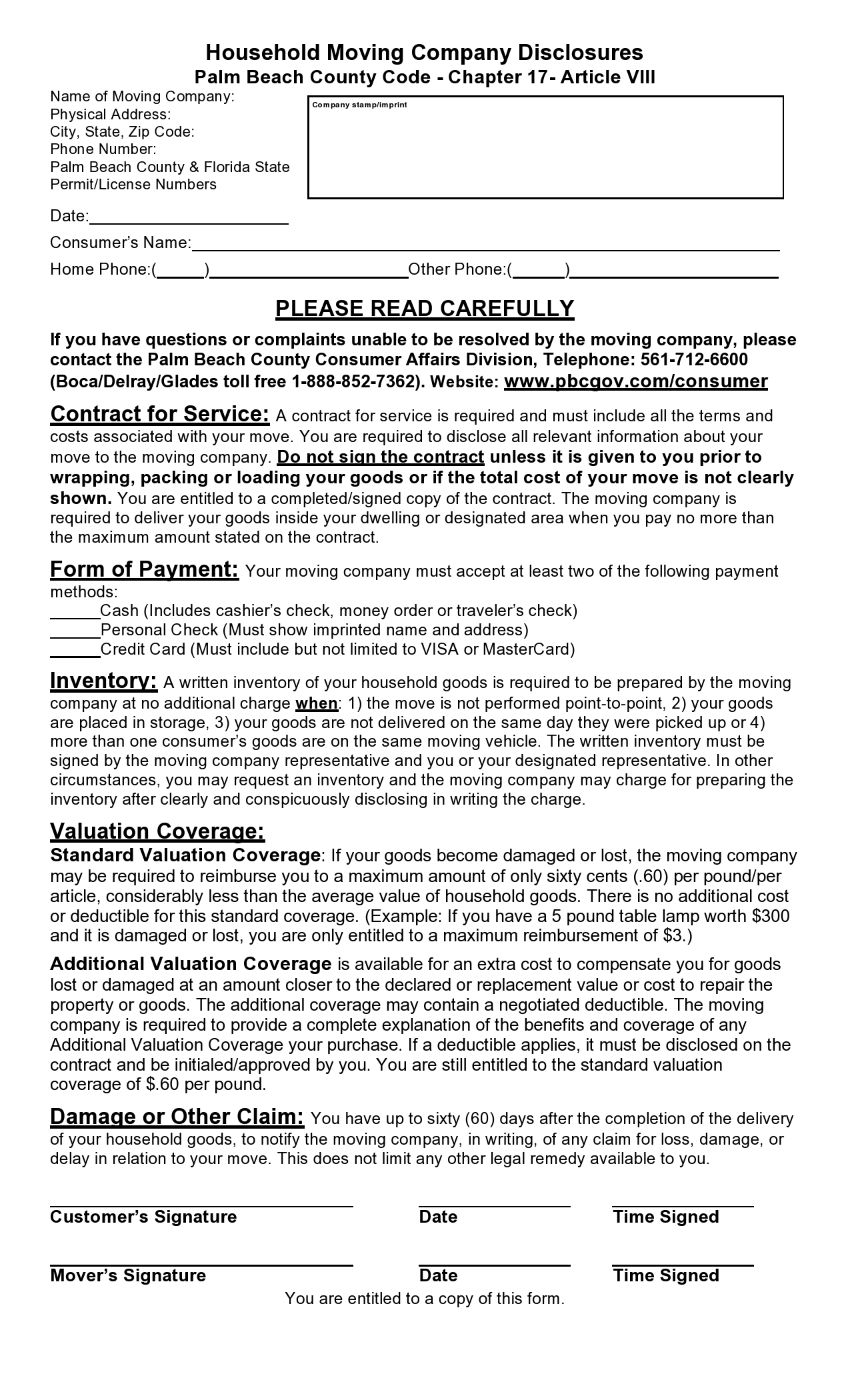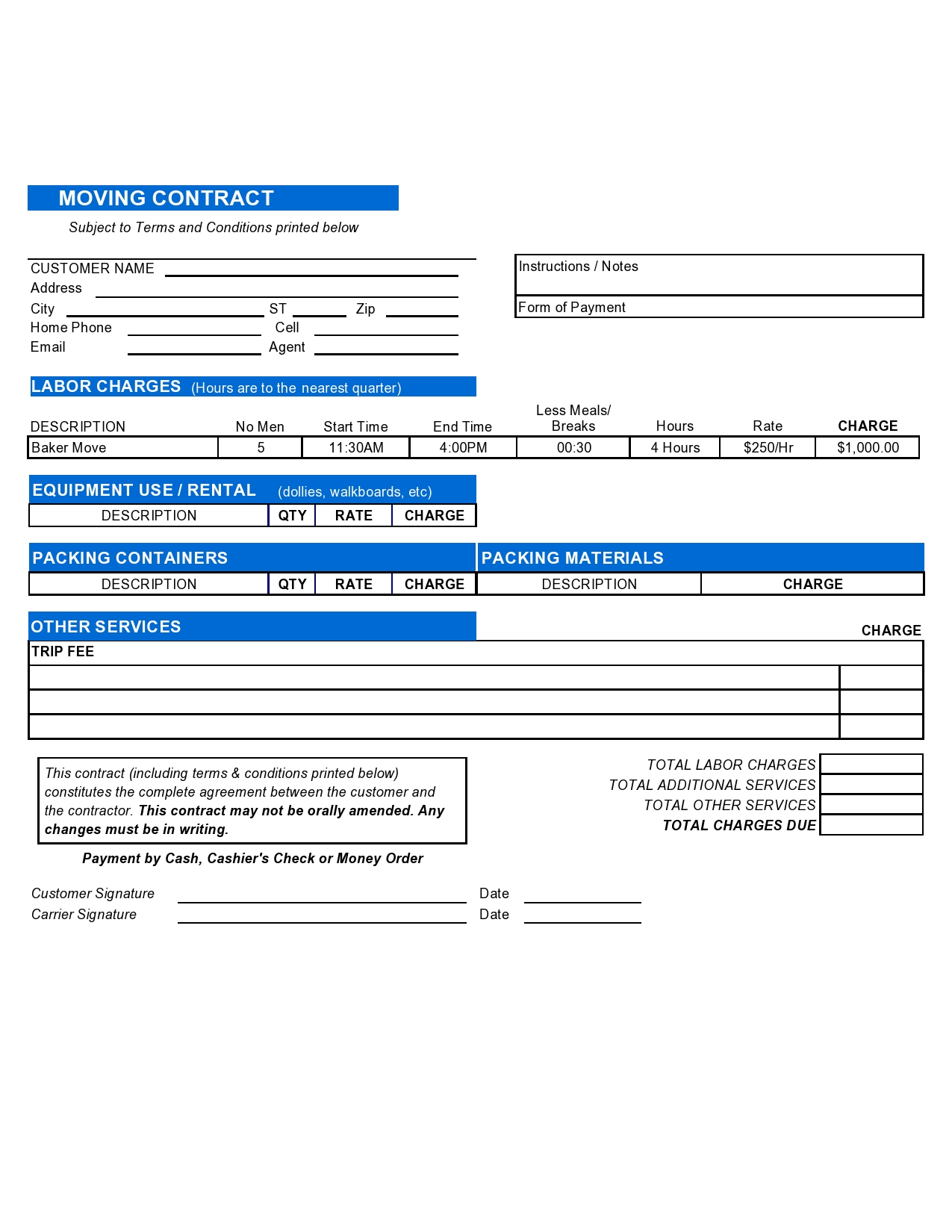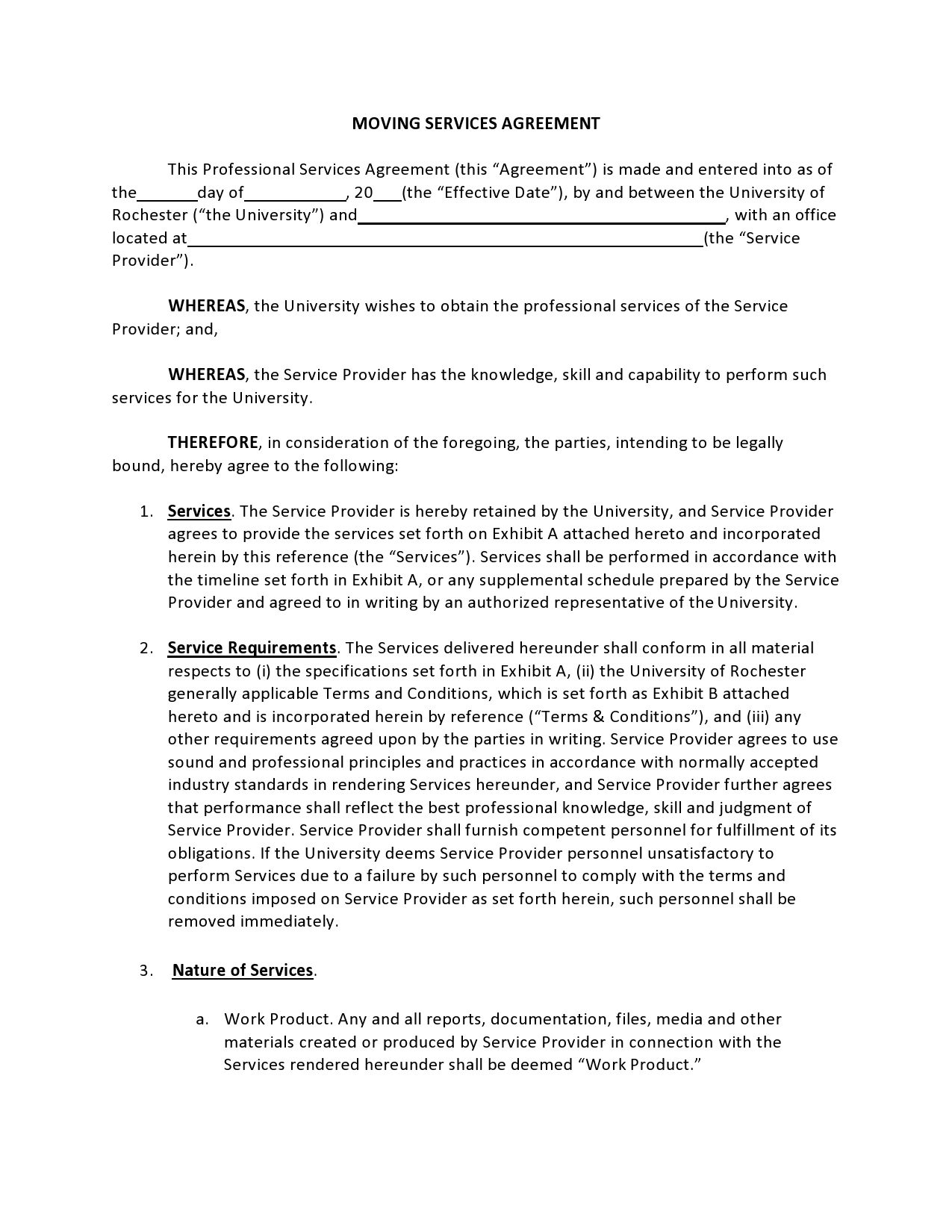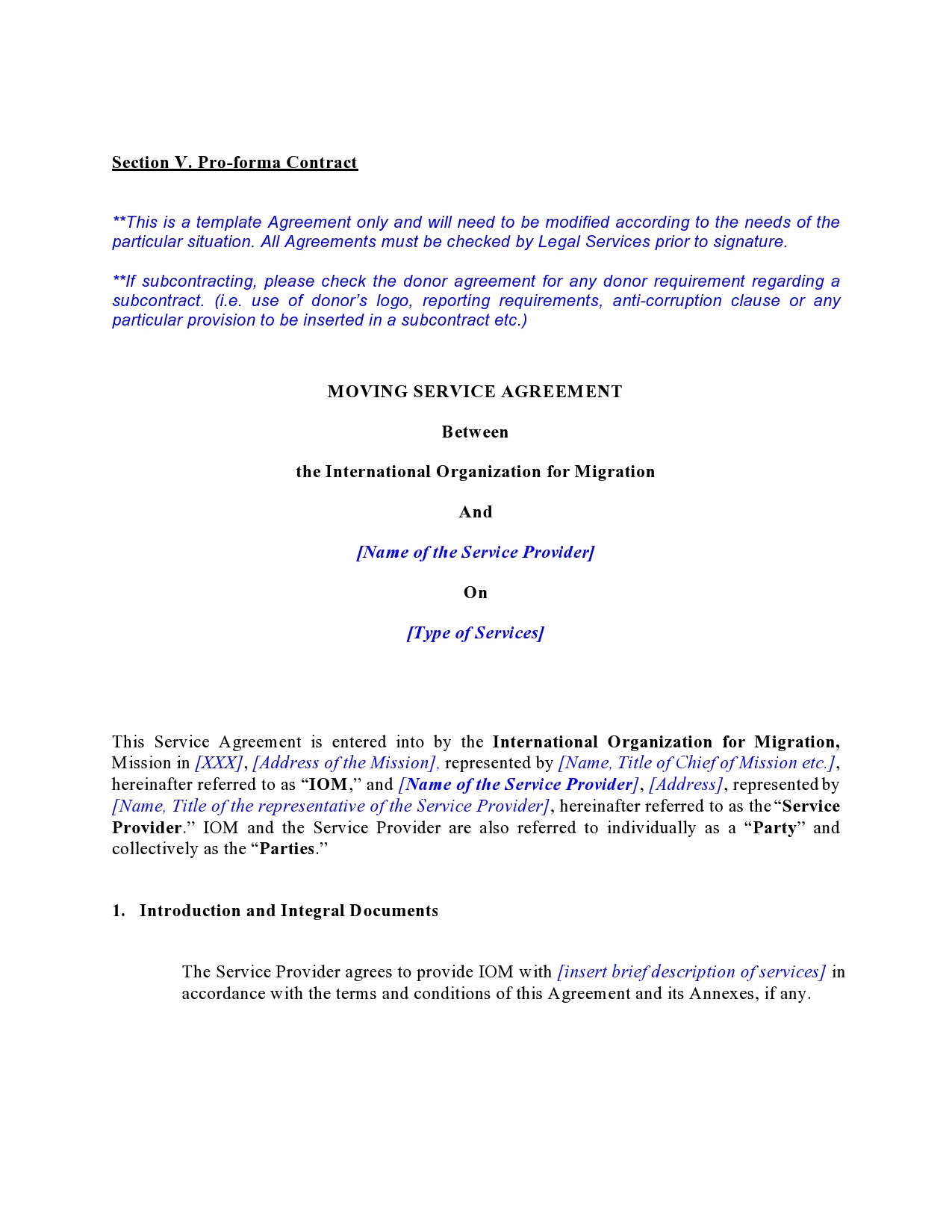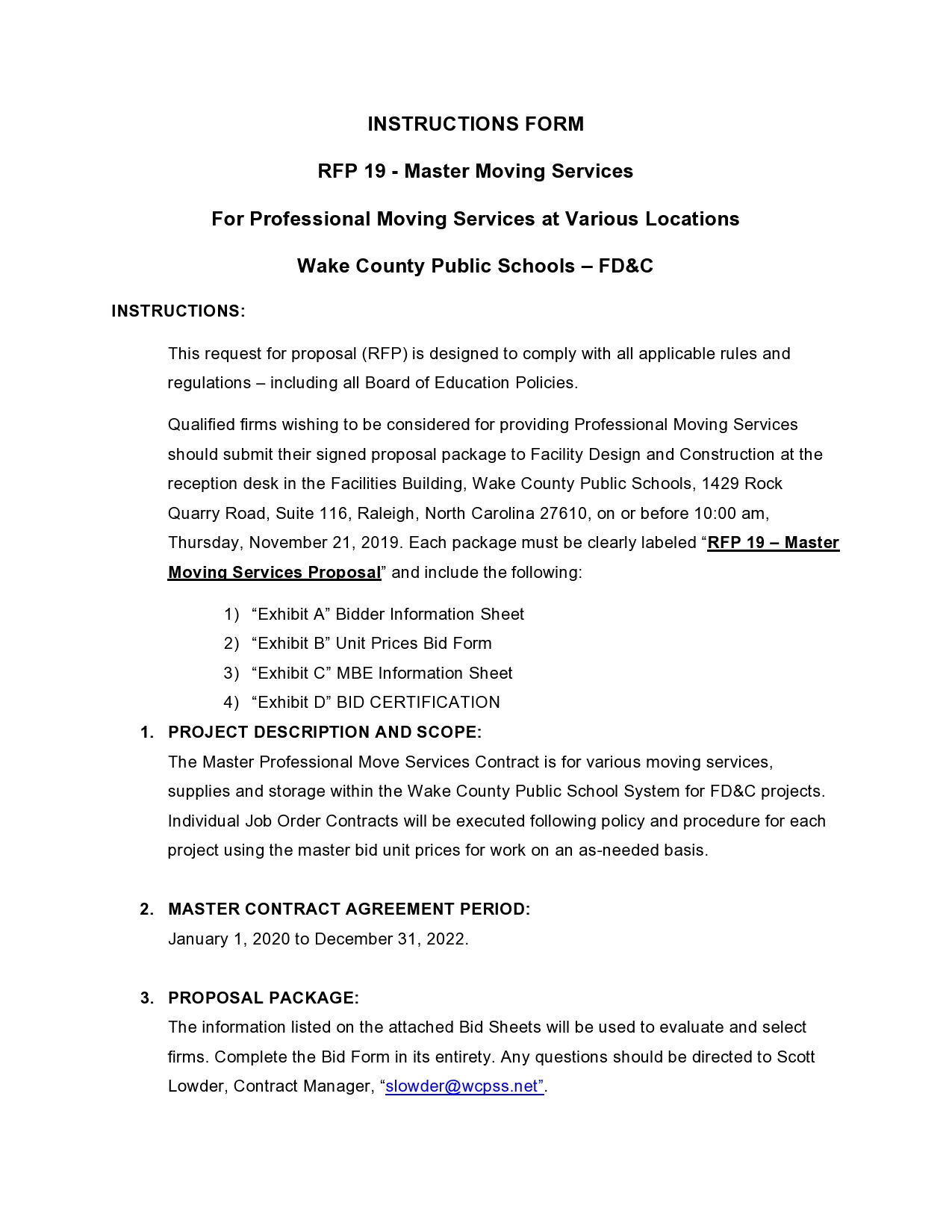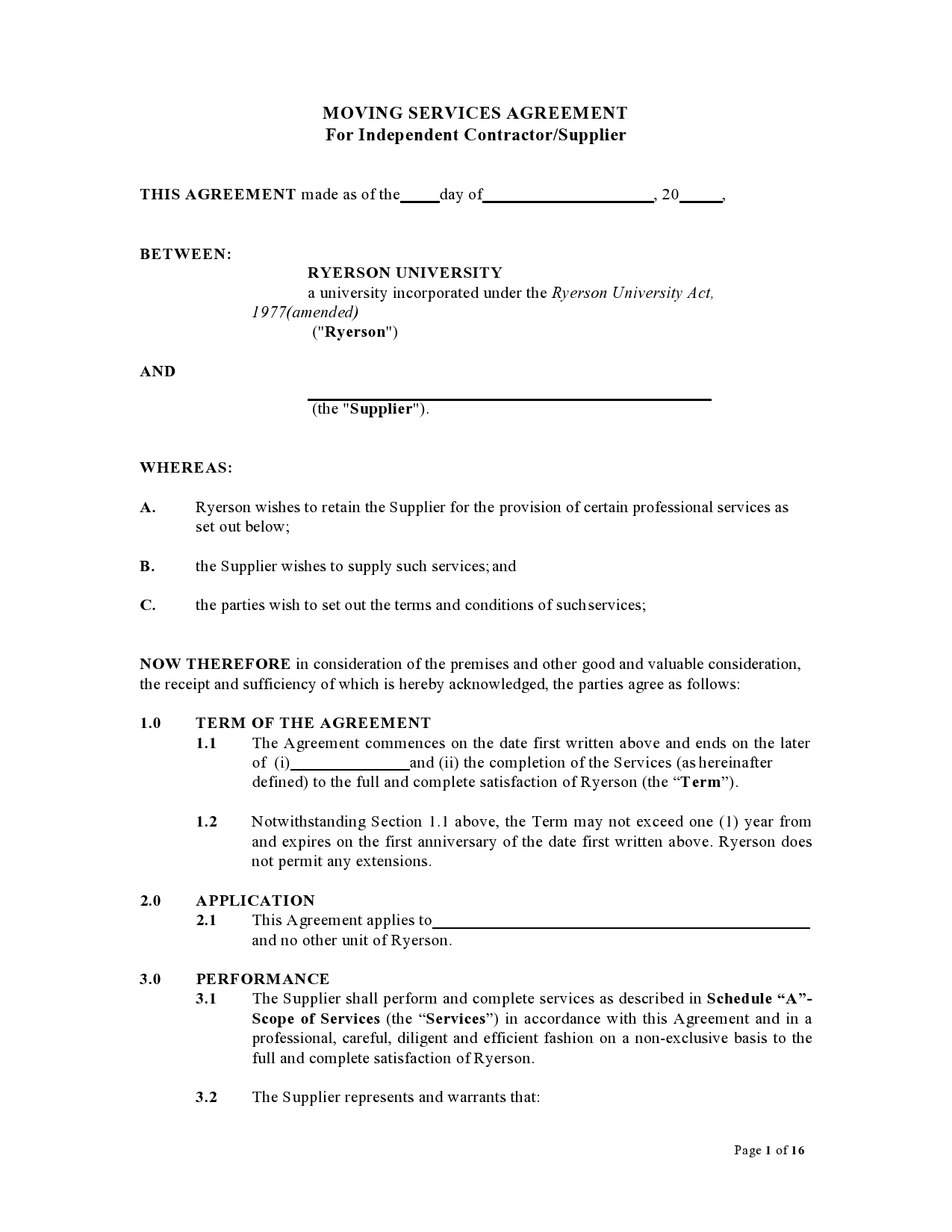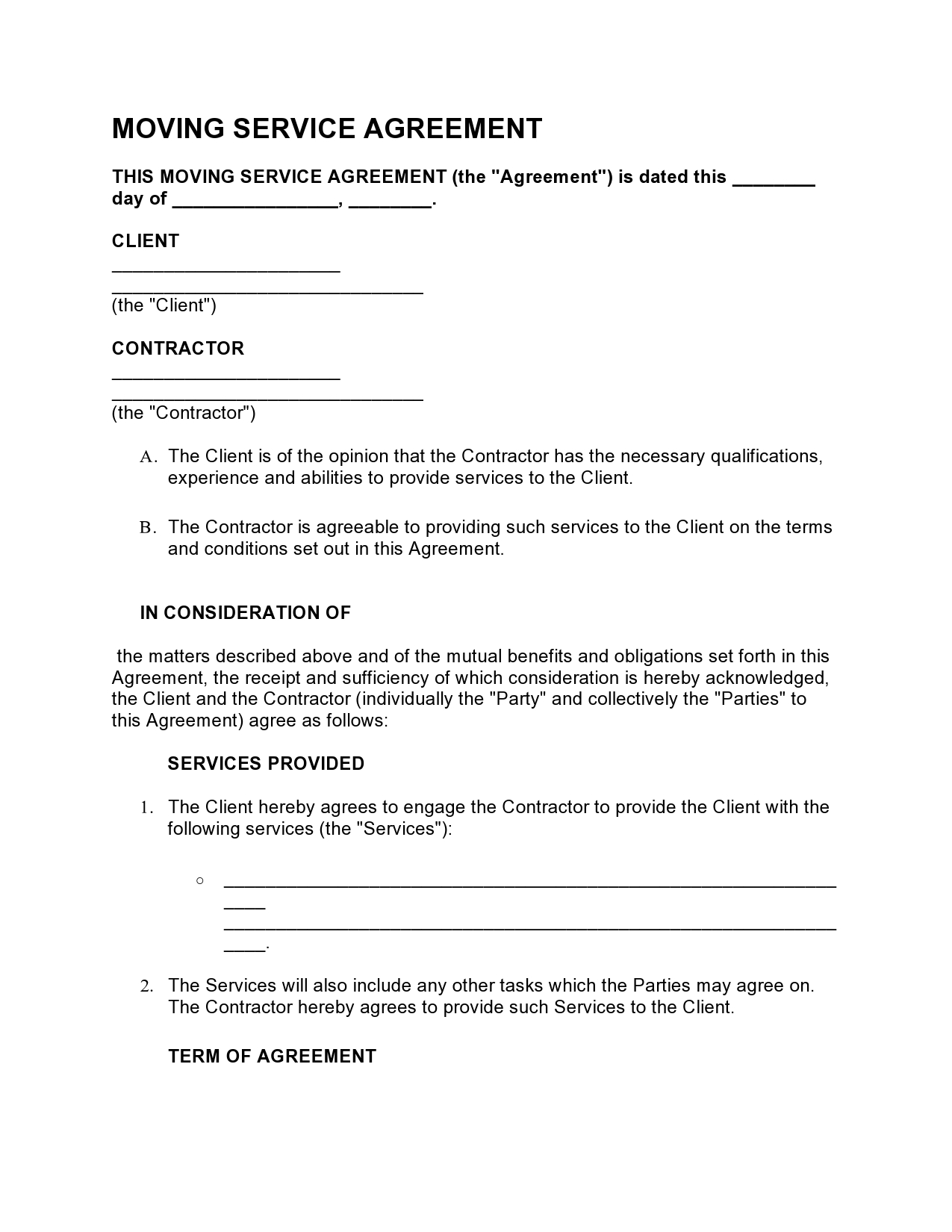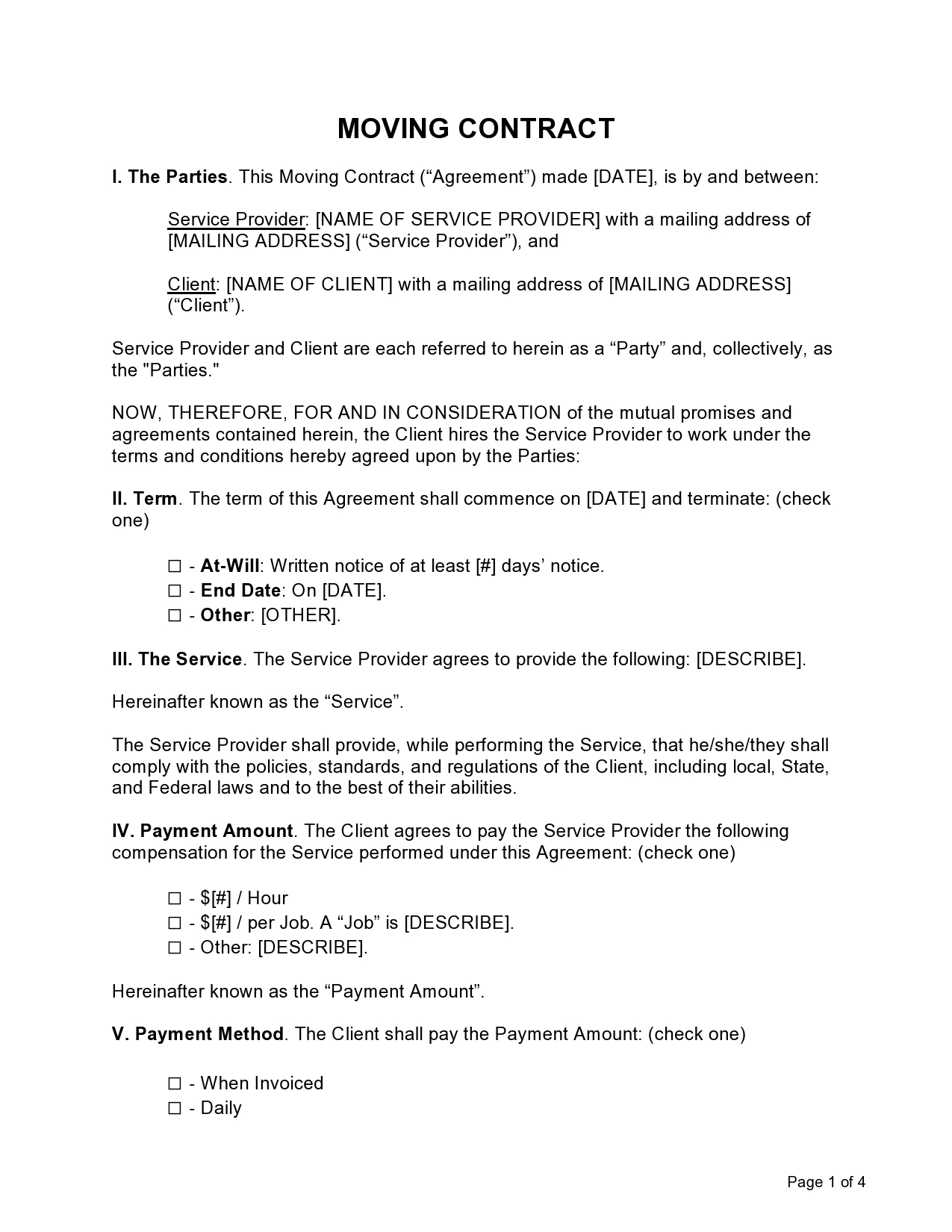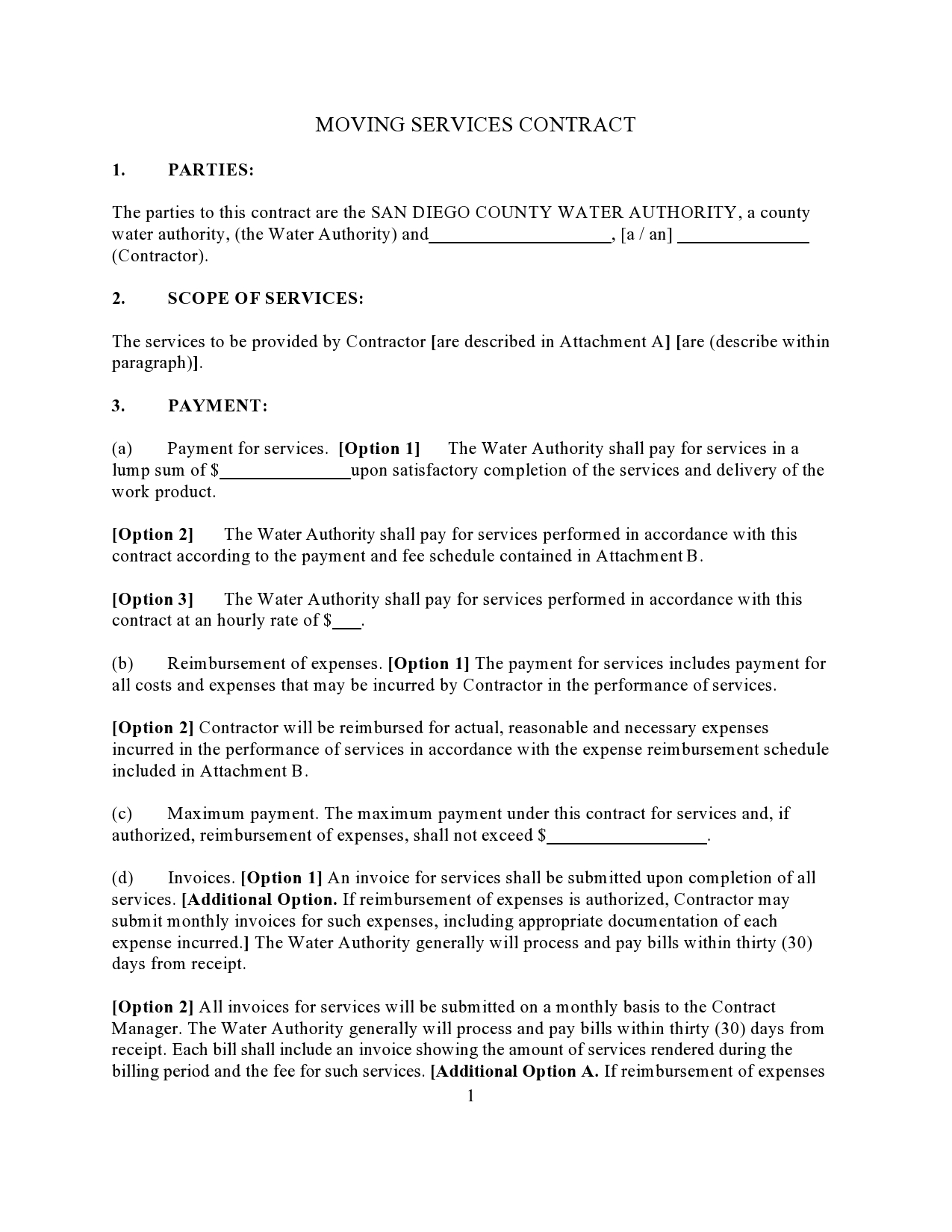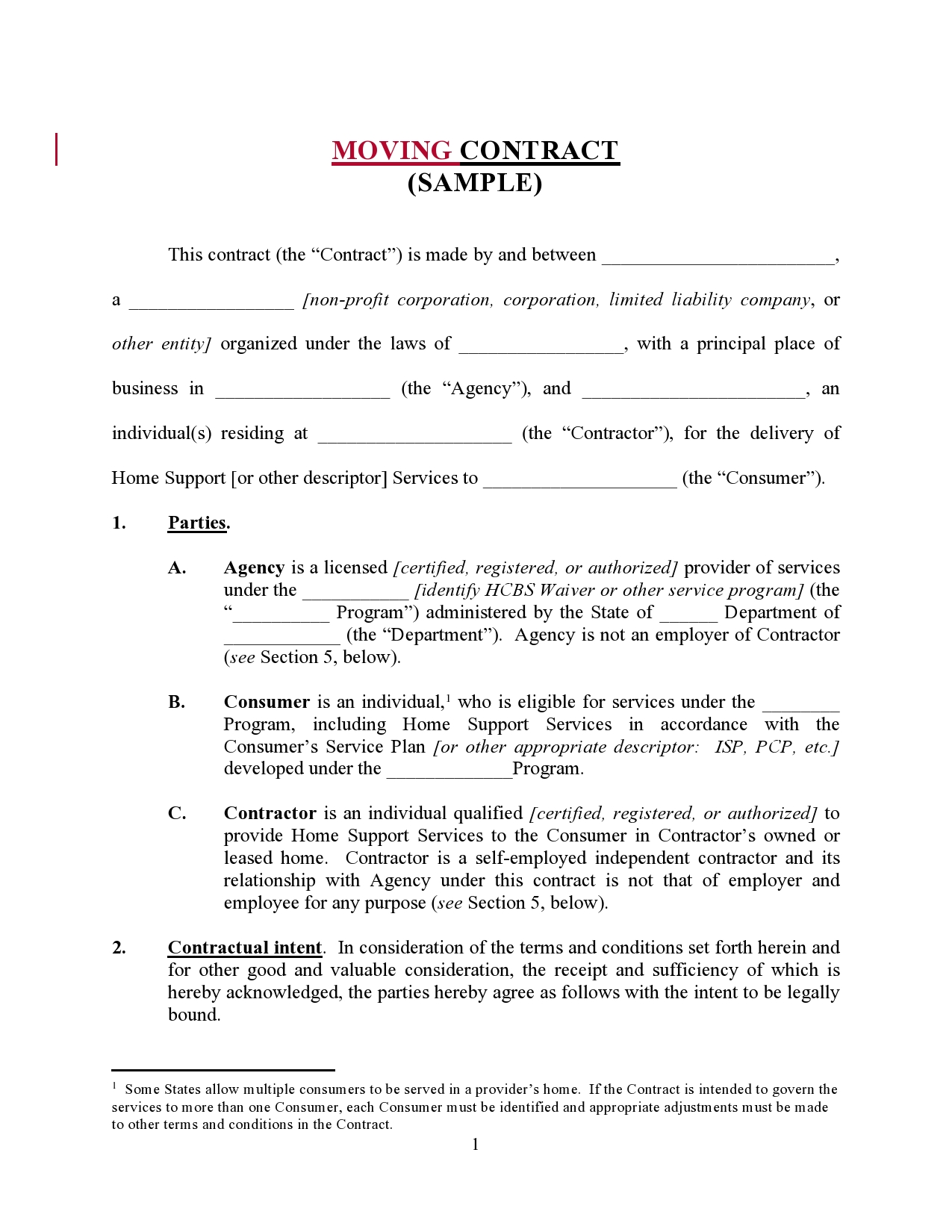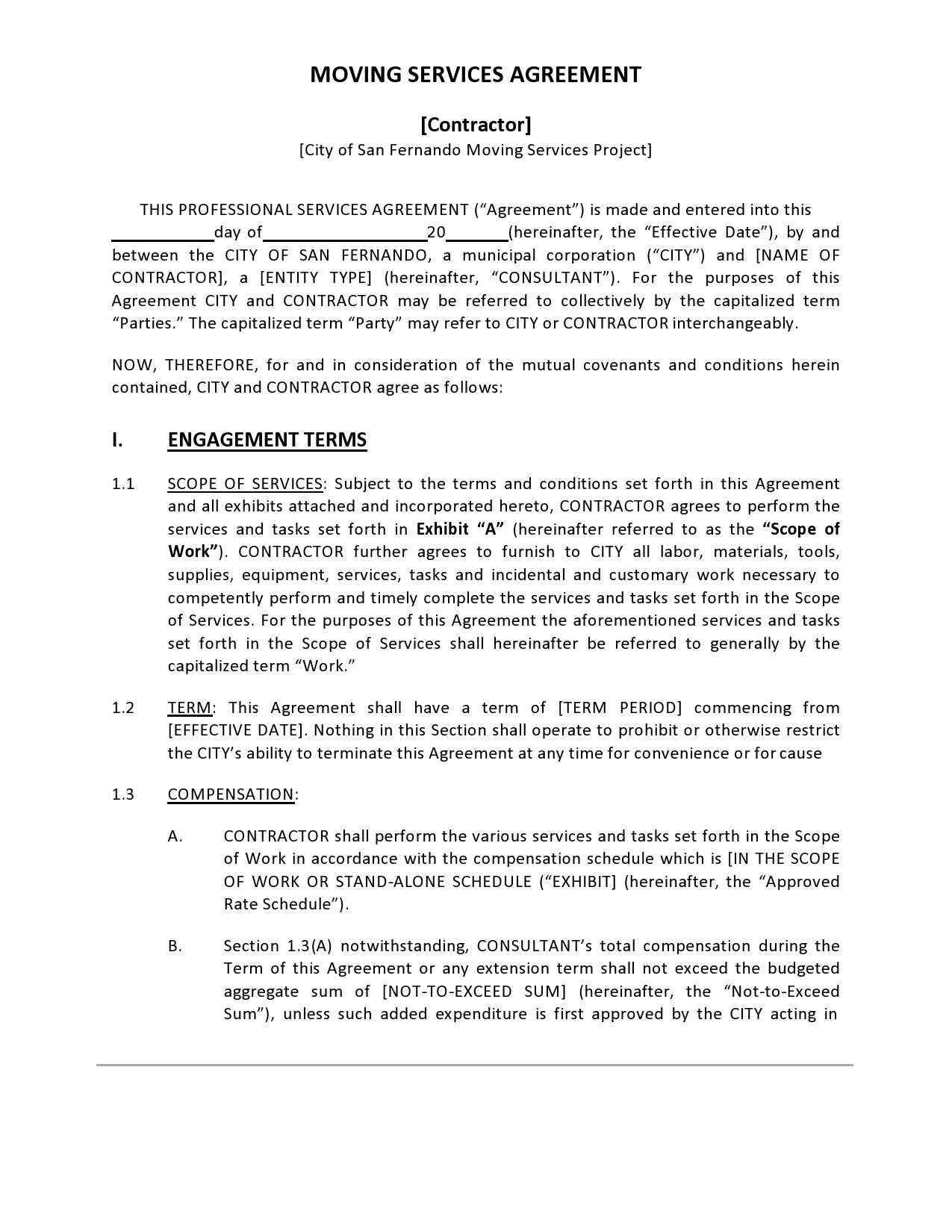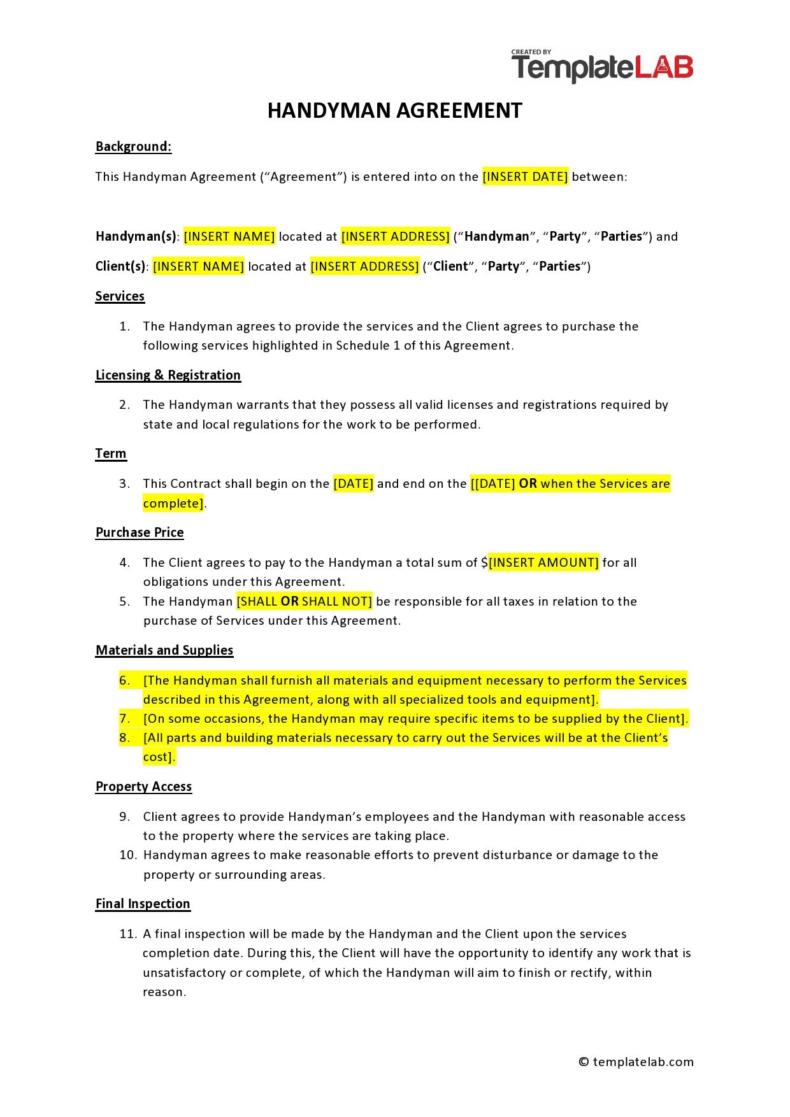When you are looking into creating a moving contract template, you might be tempted to just look at a moving company contract and copy the language that is used in this document. This might be sufficient in some circumstances, but there are often unique considerations that you need to include in the moving contract that you might not see in a moving contract sample. Using a free moving company form might just give you an idea of what needs to be in the contract but now how to write an authoritative contract.
Table of Contents
- 1 Moving Contract Templates
- 2 What is a Moving Contract?
- 3 Moving Company Contracts
- 4 Why Do You Need a Moving Contract?
- 5 Moving Contract Samples
- 6 What to Include in a Moving Contract?
- 7 Free Moving Company Forms
- 8 Some Other Items You Might Want to Include
- 9 Moving Contract Drafting is Key to the Moving Process
Moving Contract Templates
What is a Moving Contract?
A moving contract is a written agreement that specifies the details of a move. You might be moving to a new business or a new home. These contracts can be made to work for either situation. The details of the agreement are meant to protect the legal rights of the person moving as well as the moving company.
Moving contracts can also be called by some other names. These names are:
- Relocation agreement
- Moving company contract
- House moving contract
- Moving agreement
Most moving companies will also provide a document that details the cost of the move or the services being accessed in a moving contract. This estimate cannot be changed or increased once it has been given, so this can help to lock in the details and price related to the move for both parties.
Moving Company Contracts
Why Do You Need a Moving Contract?
There are many reasons that you might want to have a moving contract in place for your move. You will be hiring the company in question to move your possessions to a new location, and they will be out of your sight and your control during the moving process. You will also be forced to trust the moving company to take care of your items when they are packing and handling them. This necessitates that a legally binding agreement be written that takes care of the needs of both parties should a disagreement arise or in the case that your possessions are lost or damaged during the moving process.
There are the following benefits of the use of a moving contract:
- Neither of the parties involved will be in disagreement about the length of the moving process
- Pickup and drop-off location
- Estimate of the cost of the move and the services involved
- Expectations about the move and how it will be conducted
These different segments of the moving contract help to ensure that both parties involved in the moving process are clear about the expectations related to the move. When confusion arises down the road, there is now a document that clearly outlines the details of the move and what each party involved needs to do to complete the moving process.
Moving Contract Samples
What to Include in a Moving Contract?
There are various parts of a moving contract that need to be included for your contract to be valid. You cannot skip any of these segments if you want to be able to use the contract to enforce the details of the moving process. This is also critical if you end up in a legal wrangle with your moving company. You want to be sure that your contract will hold up in court as well.
- State and Date of the Move. The date of the move needs to be listed in the contract clearly before anyone signs it. You also need to indicate the state and address of the pickup location. The state and address of the drop-off location need to be included as well. There should also be an estimate of the drop-off date, but there can be some leeway in this part of the contract to allow for issues along the route due to weather and other potential slowdowns.
You will need to be sure that this information is very clear and that both parties have agreed to it before the contract is signed. When you have set dates and drop-off and pickup locations on the contract, there can be no argument about confusion with regard to locations or dates related to the move. - Identify the Parties. The person who has hired the moving company needs to be listed on the contract as well as their current and future address. Business names need to be listed if they apply as well and so do official titles. The moving company information needs to be clearly stated in the contract, complete with their business address and their legal names or the names of the representatives signing on behalf of the company.
- Moving Services Description. This part of the contract needs to be very detailed. It will need to state clearly all of the services that are being performed by the moving company for the moving process in question. You will need to indicate what will be moved, if the move is a commercial or residential move, when the items in question will be picked up and dropped off, and the price of the various services that are laid out in the contract. You might also want to indicate if there will be goods sold or donated as part of the moving process as well.
Any specialty services that are being accessed related to the move need to be carefully described as well. If you have asked for services that are not part of the typical moving process, you cannot just assume that everyone involved will understand what this means. You will want as much detail in this section of the contract as is needed to be clear about the services and the functions that the moving company is offering. - Legal Provisions. The legal provisions section will often refer to legal limitations that are standard for the moving company industry but might also mention items that are part of the considerations for moves that are done within specific states. Any limitations on driving, delivery, information related to damages, and even information about breach of the contract need to be included here in this section.
You cannot afford to leave out any legal context that needs to be given in this part of the contract. This is a portion of the contract that might benefit from being looked at by a legal expert of some kind. Making sure that you have the right information in the legal provisions section can make your contract much more effective if there are legal issues that arise later on or if there is disagreement about the execution of the contract once the move has begun. - Signature Section. All the parties involved in the moving process need to sign the contract and the date when they have signed. This is critical to ensure that the parties have agreed to the details of the moving process. When you create any kind of legal document that is meant to bind two parties to specific actions, you need to be sure that you have valid signatures on the contract to make it valid.
Unsigned contracts are not considered to be active, so you cannot assume that just having your own signature on the contract is enough to make it binding. The right parties also need to sign the document, and representatives of moving companies can sometimes count as the signing person when the owner or other listed company members are not available to sign.
Free Moving Company Forms
Some Other Items You Might Want to Include
There are some other considerations that you need to keep in mind when you are drafting a moving contract. You might want to have language in your contract that addresses the Bill of Lading. This is the internal document that the moving company uses to inspect your items before they relocate them to your new location, and then you sign off on the delivery of the items when the move is complete.
The Bill of Lading is a legal document as well that implies that you and the mover have agreed that the condition of the items that they moved for you is acceptable upon delivery. You should never sign the Bill of Lading if your items have been damaged, but some moving companies will try to force you to sign off so that they can move on to other deliveries. You will not be able to make a claim against the moving company’s insurance if you have signed the Bill of Lading, so this is an important part of the process to understand clearly.
Some moving contracts will include a section that pertains to the use of the Bill of Lading as proof of delivery and proof of the condition of the items that were moved. This section can help to protect you from issues related to this document being mishandled by the moving company. If you are concerned about this part of the moving process, be sure that you include a Bill of Lading section in your contract.
You might also want to create some general language about the other documents that you expect to be included in your moving process. There are various other documents that might be necessary to complete your move, and you can require that they are included in your documentation process by naming them in the moving contract that you create.
The other paperwork items that you might want to name as being required for the execution of your moving contract are:
- Receipt which acknowledges payment for the moving job and services
- Payment plan, which outlines the way that payments will be handled related to the moving process. This will be used if you are not paying in a lump sum for your move.
- Moving checklist that details all of the various items that are being moved so that nothing is missed or left behind at either end of the trip. This might seem like it will take a lot of time, but it can be well worth requiring this document if anything of yours goes missing during transport to your new location.
Make sure as well that you have discussed in detail with the company what the moving locations will be like. There are some instances where a full-size moving van might not fit into the driveway or the street at your old home or new home. These details need to be called out in the moving contract so that there are no issues with pickup and delivery. You do not want to have to fight with the moving company about lost deposits or issues with rescheduling moving dates due to confusion about the nature of the drop-off and pick-up locations.
Moving Contract Drafting is Key to the Moving Process
The moving contract that you draft will protect you and the moving company during your move. Both parties need to be sure that they understand the expectations of the moving process and the more detail that is included in the contracts, the more likely it will be that you and the moving company will have a positive experience during your move.
The legal information, the dates, and the named parties that are called out in a moving contract offer legally binding information that makes certain these contracts will hold up in court. While you never want to assume that you will run into legal difficulties when you engage in a move to a new location, you should be prepared for the chance that this might come to pass. The more information that is included in your moving contract, the less likely you will be to run into issues down the road during or after your moving process has been completed.

